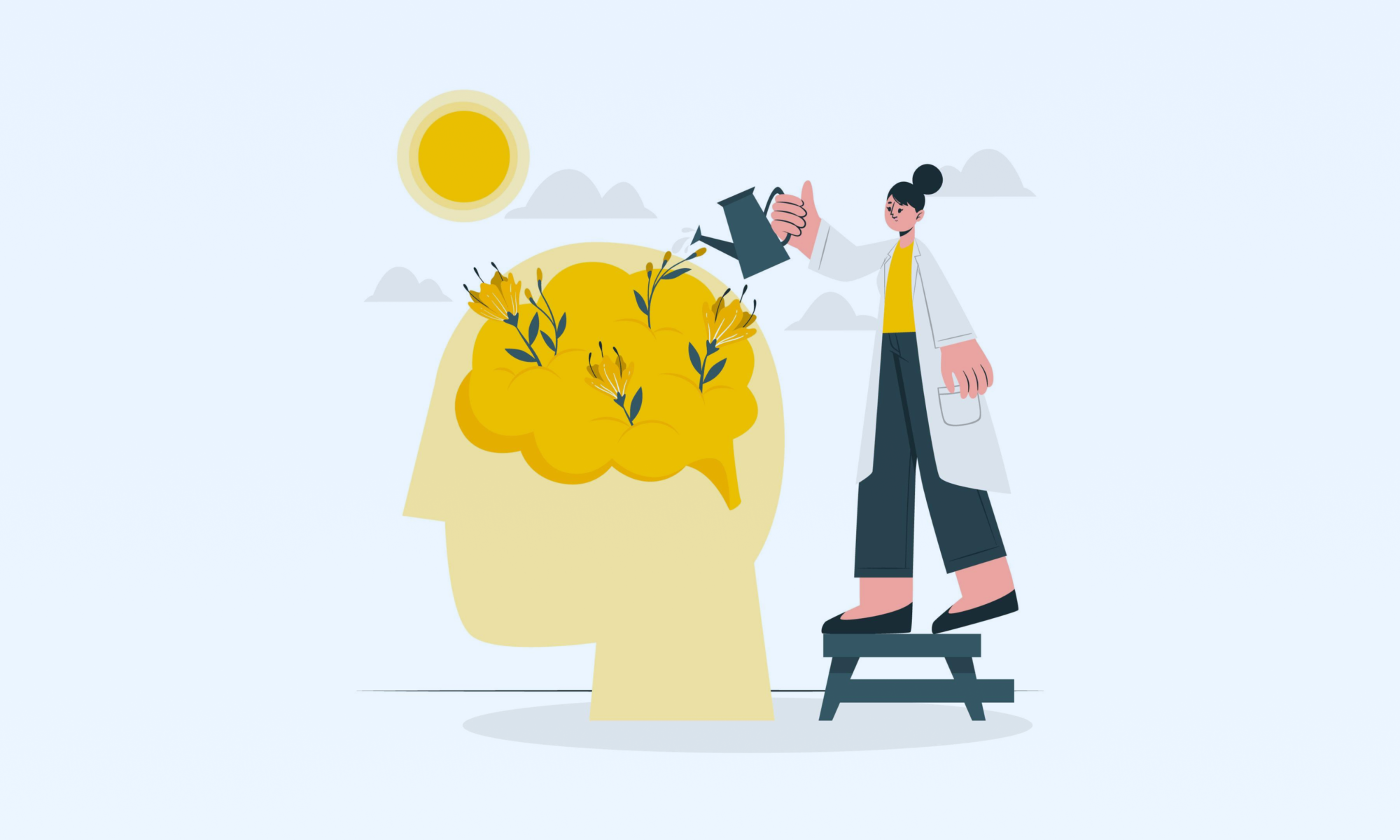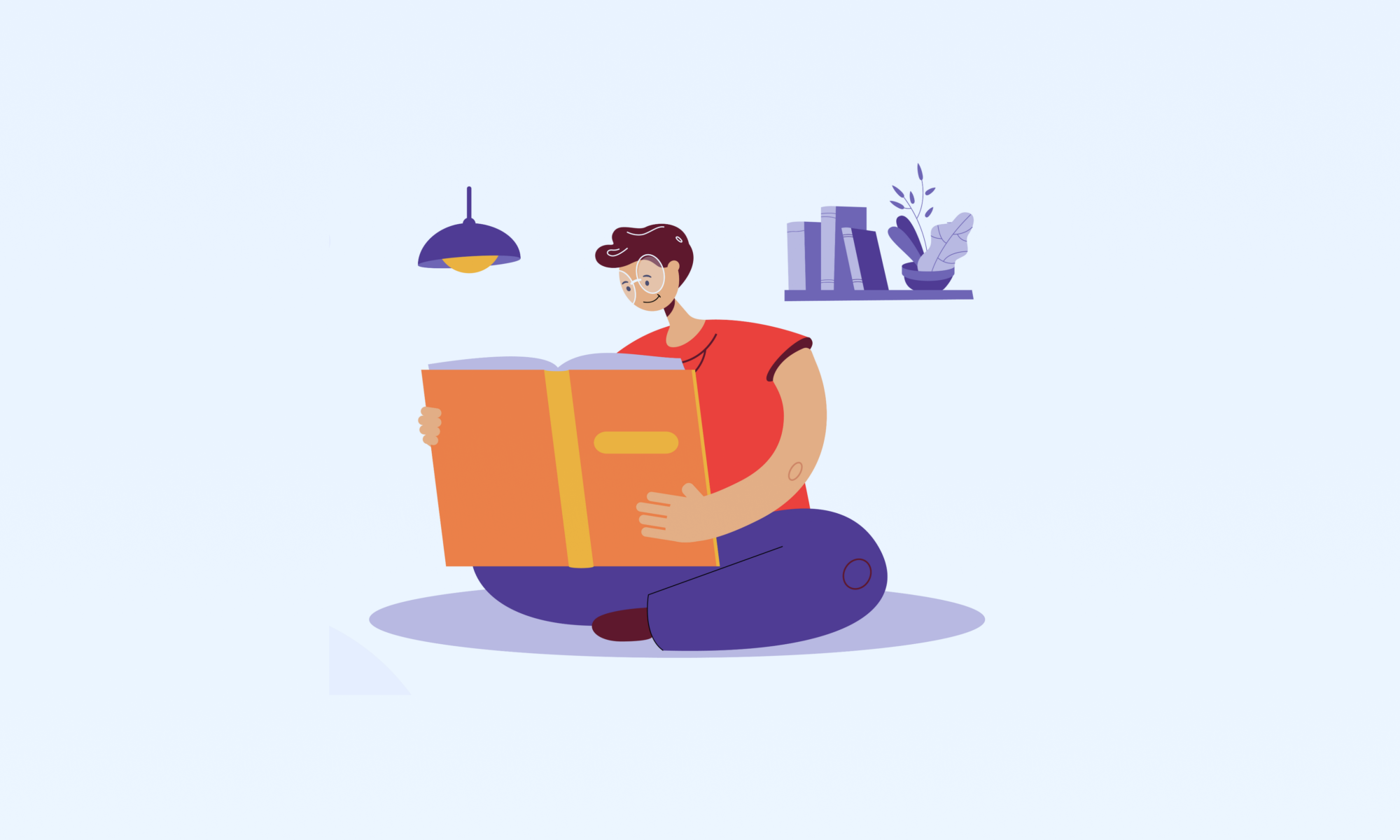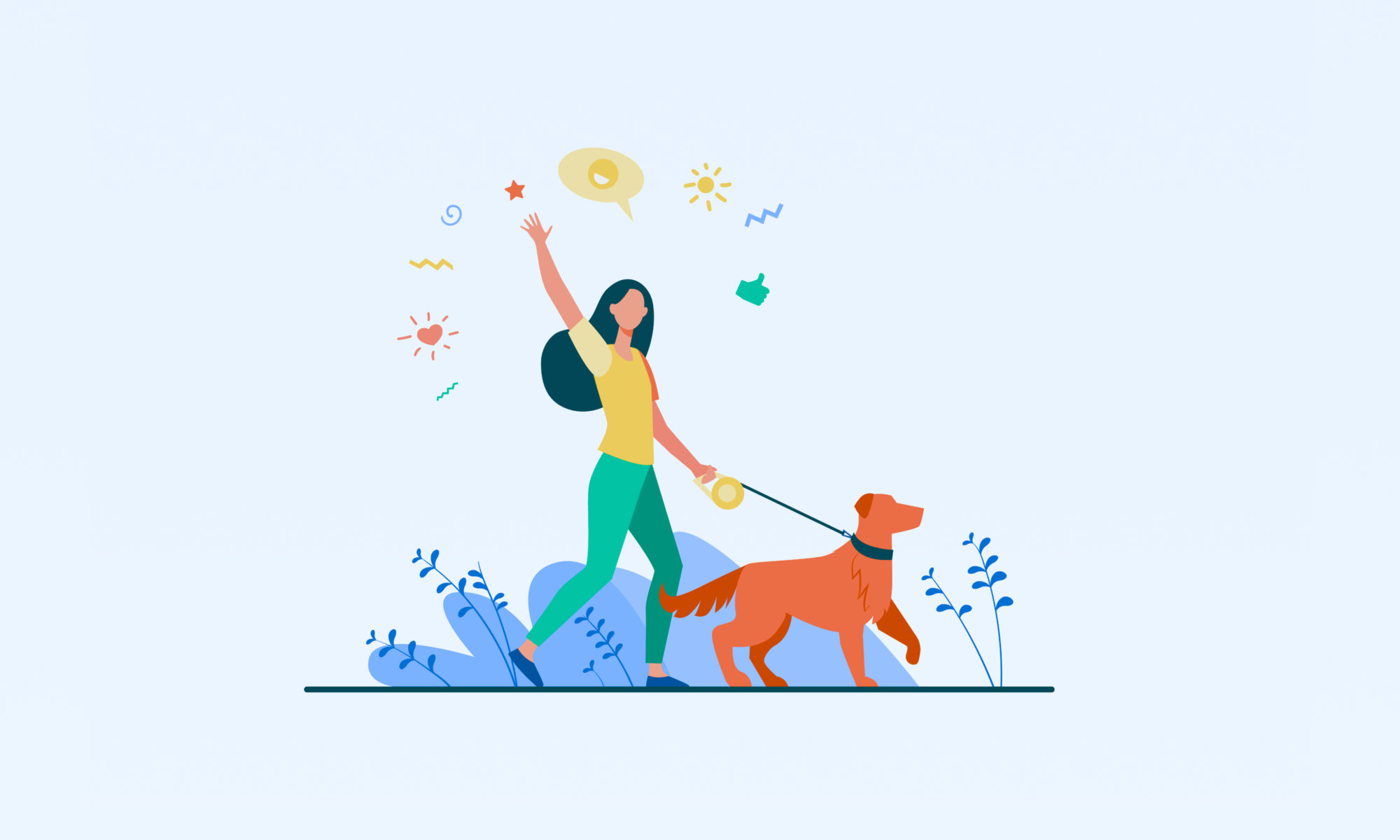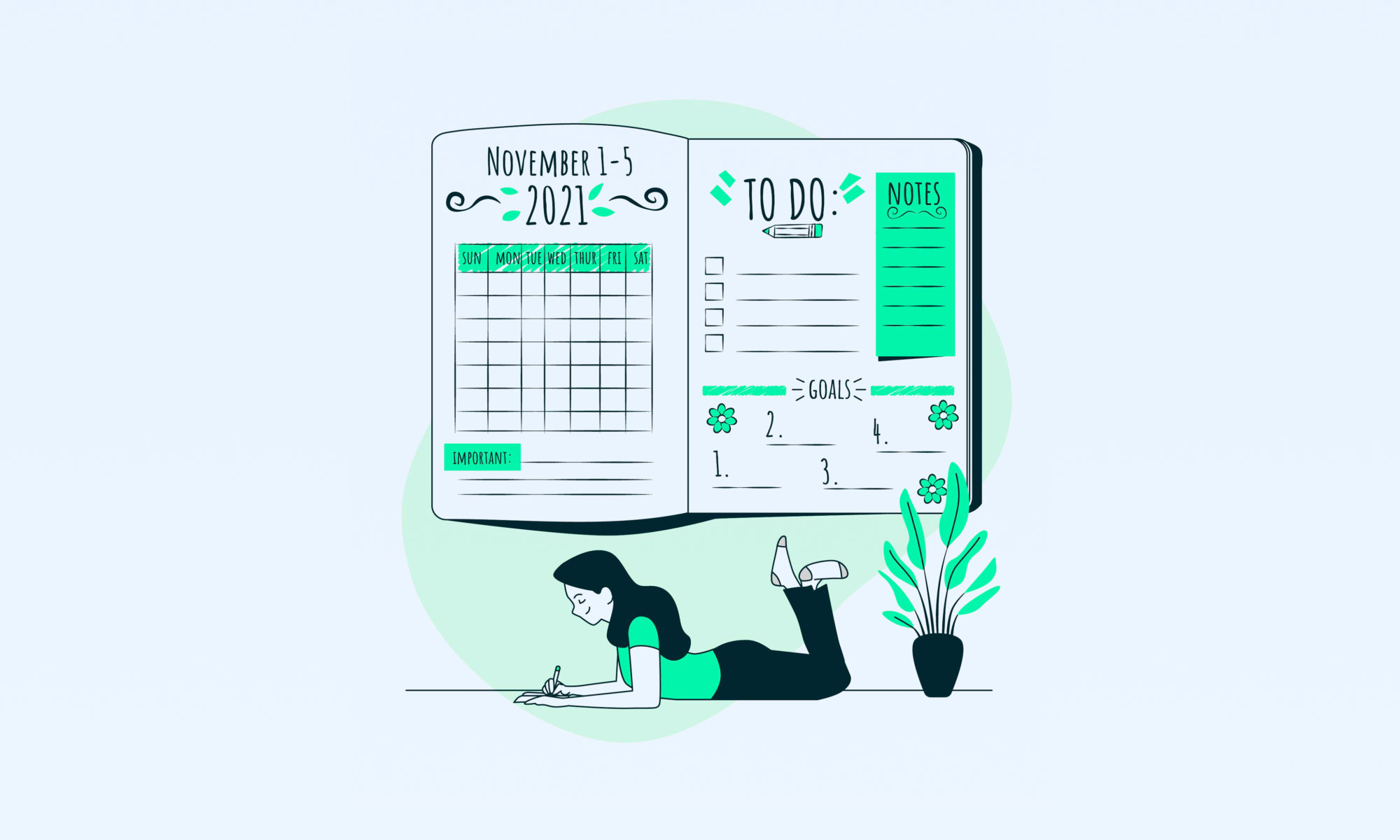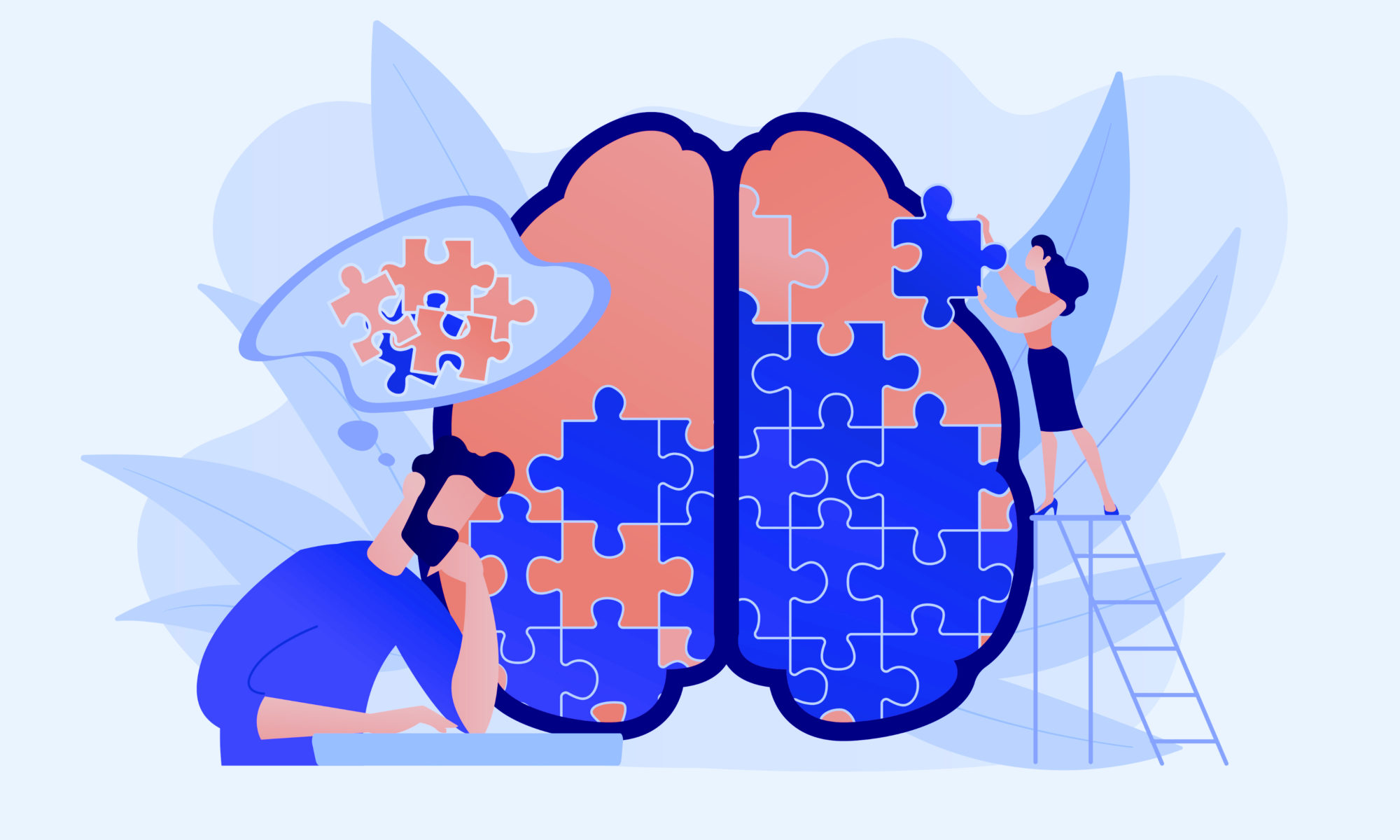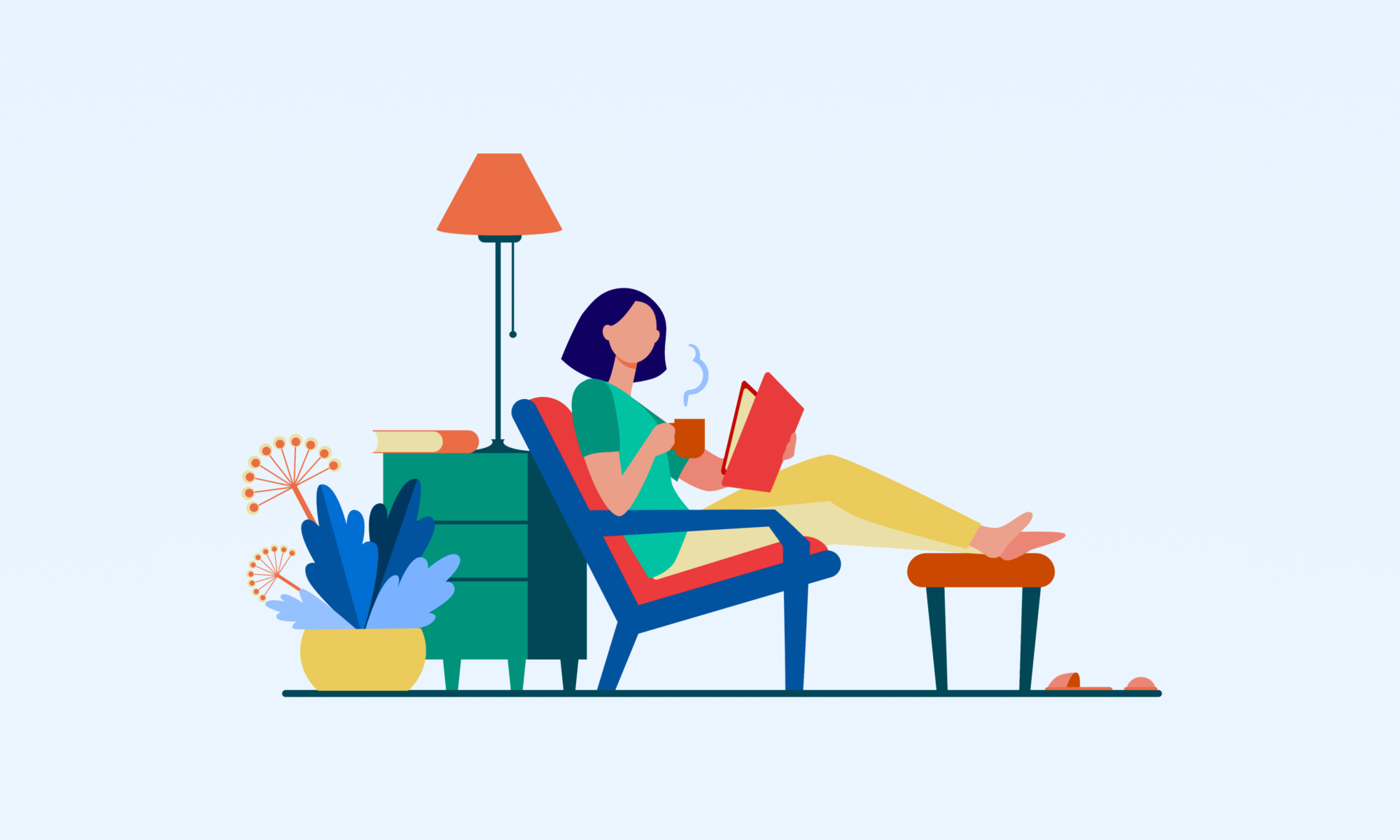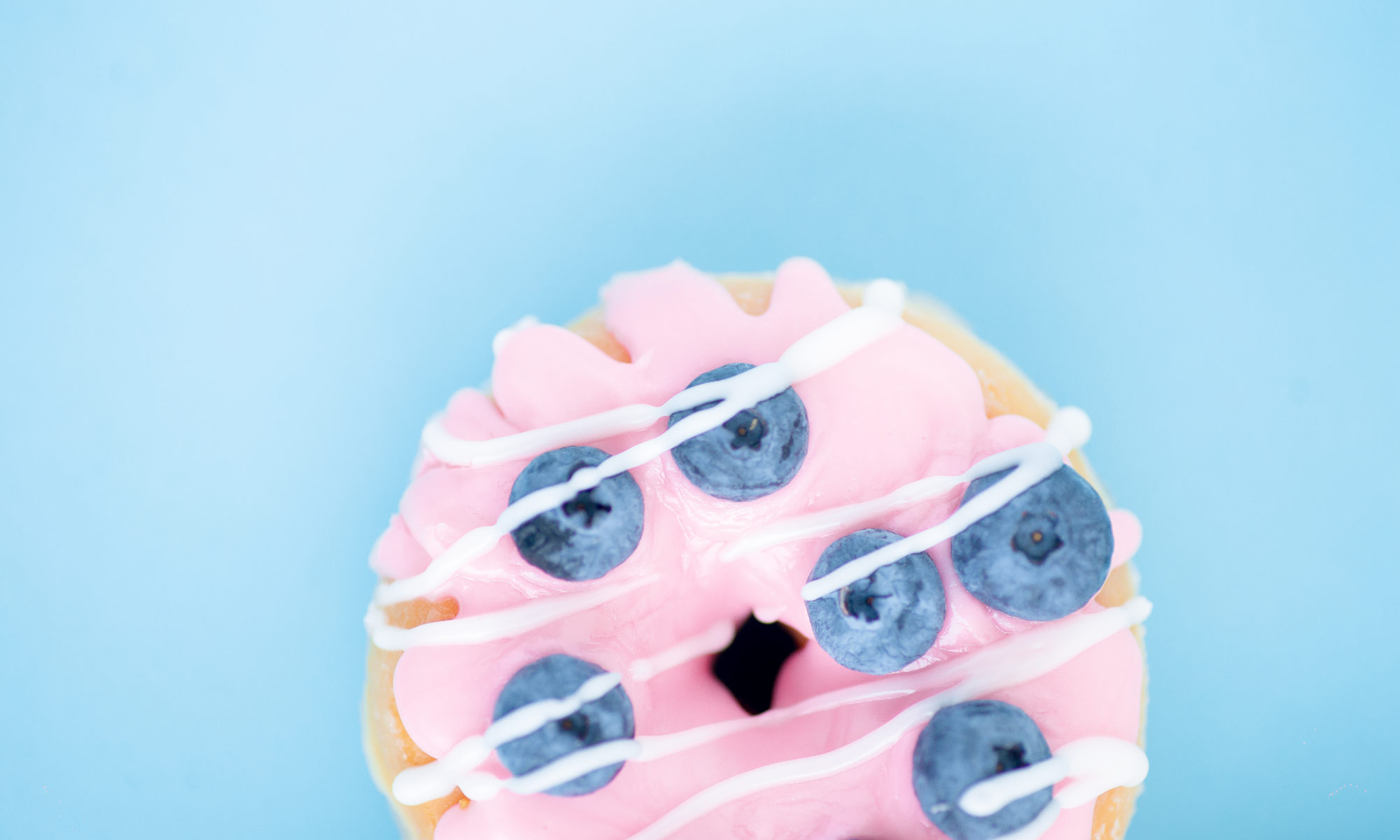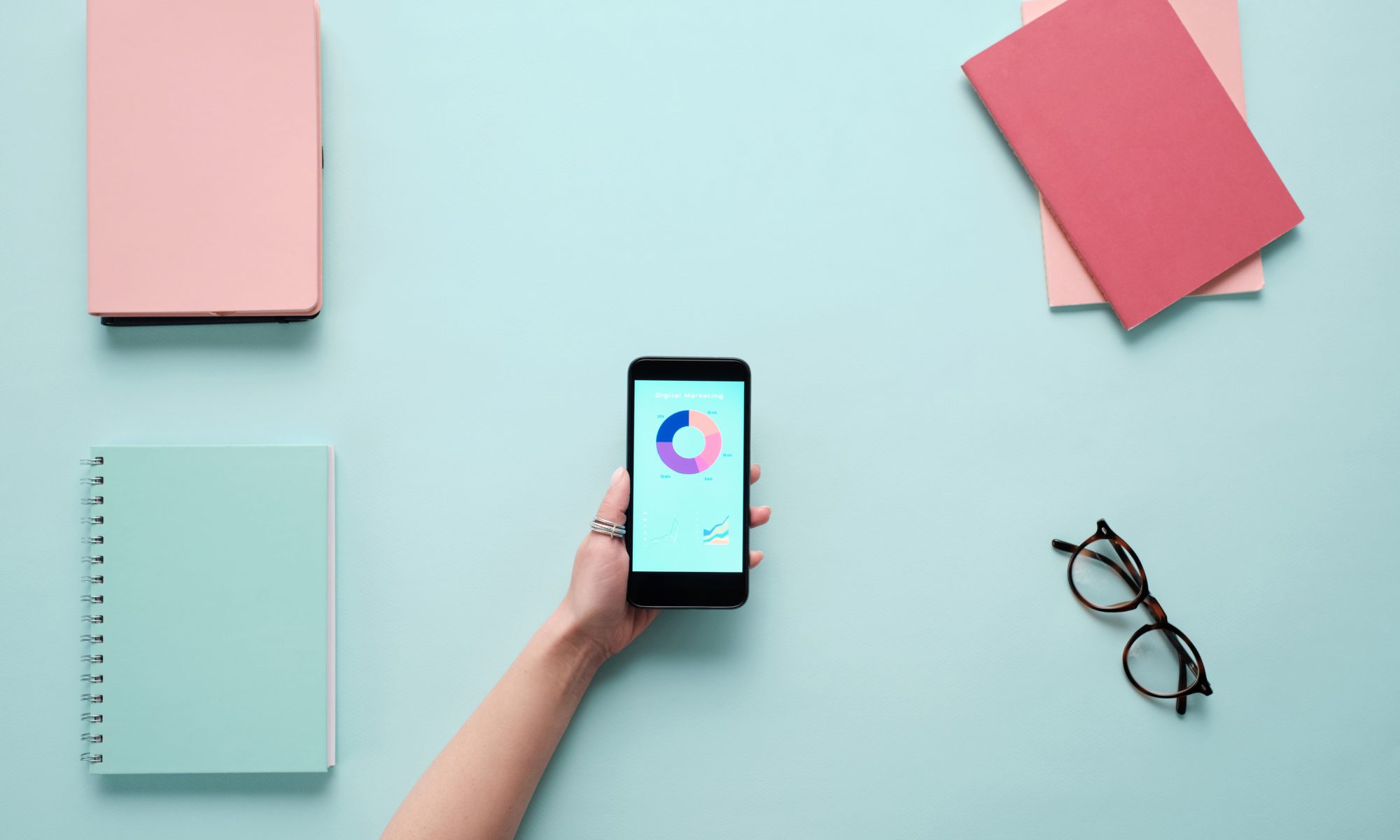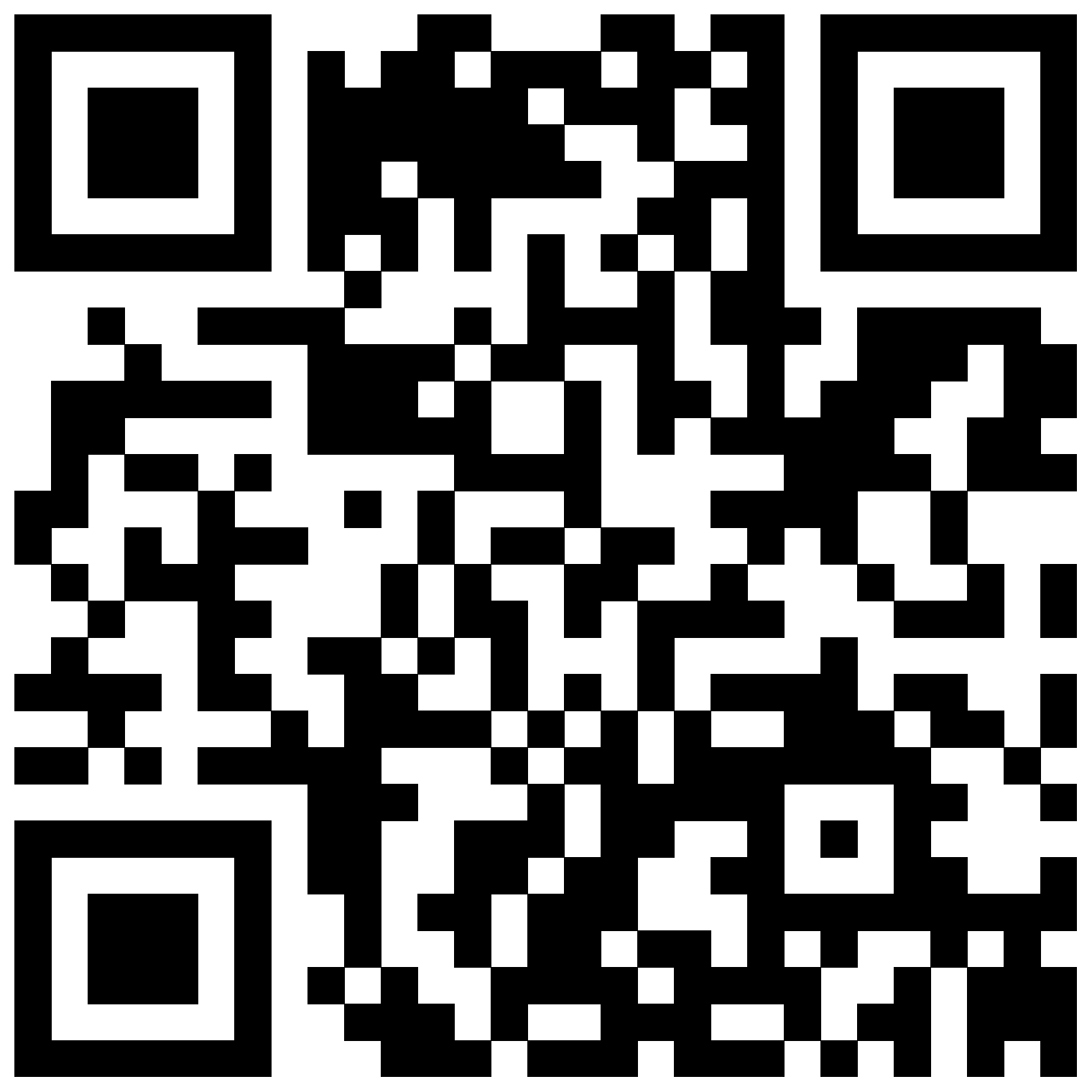My advice is: Doctors often look for a history of symptoms of an illness before they’ll consider a diagnosis of any kind. A log of symptoms with dates, charts, medications, and factors will surpass an “I don’t know” any day. The more a medical professional knows about your history, the better informed they can be when giving you a diagnosis.
Mental Health, Chronic Illness & Control
With World Mental Health Day approaching, James (Bearable’s lovely CEO) asked me (Natasha Lipman), to write a little something about the impact that living with chronic illness has had on my mental health.
This, of course, is a pretty big topic. From dealing with the emotional impacts of pain and fatigue, to fear, isolation, and the feeling that the things that matter in life are being ripped from your hands, one word kept coming up that I’d like to talk about today:
Control
I wasn’t diagnosed with my first chronic condition, Ehlers-Danlos Syndrome, until I was 21, which meant I spent my whole life up to that point feeling like I was existing in a body that I didn’t understand. A body that acted almost separately from me, one we didn’t even know warranted a diagnosis.
Getting a diagnosis changed that in interesting ways – everything we thought was weird and confusing about my body made sense – even the small things.
I felt, for the first time, like I was in control. That now I had a name to put to this thing, I could get the help that I needed to live the life that I wanted.
Losing Control
And whilst I did get help, it mostly wasn’t…great. Over the years as I tried to navigate this body of mine whilst getting progressively more unwell, that sense of control grew weaker and weaker.
I tried to grab as much back as I could by pushing myself to extremes, desperate to keep up with my peers, trying to do and be all the things I felt I would’ve been able to do if I was able-bodied.
But even though I didn’t have control of my body, I always felt like I had control of my mind. Until I didn’t.
After a bad experience with medication that caused psychosis and developing a couple more conditions, I felt like I’d lost control of everything. My work, my social life…I was in my mid-twenties and I felt like my life was over.
Over time, as these things do, the worst of it passed, and I started to be able to rebuild again. But that feeling of helplessness never left. I was determined that I would do everything in my power to manage as well as I could. And so, I started experiencing the flip side of control.
Self Management
When you live with conditions which are mostly dependent on self-management, you can find yourself in a bit of a weird bind. You can grasp so hard trying to find control, that you forget that you’re living with conditions that are still, ultimately, not entirely controllable.
You often end up with a huge list of things you know help you (many of which come up against trying to live in “the real world”), and you can try to control every last minute detail, desperate to make sure that you give yourself the best chance at feeling as well as possible.
You try everything under the sun, hoping that *this* may be that thing you hadn’t thought of, the answer you’ve been looking for. Time, money, hope.
But at some point, too much control can become just as restrictive.
It seems, like with most things, there’s a balance that needs to be found. One that helps you find elements of control, even when the situation can feel anything but.
How Health Tracking Can Help
For years, I’d regularly experience what I called “deep dark” depression. It was extremely distressing and it often came out of nowhere.
It was only when I started tracking my periods that I realised that I could track to the day how I would be feeling emotionally based on where I was in my cycle.
Just having that knowledge gave me a sense of control that I’d otherwise lost.
It helped me to understand that I can’t control whether these “deep darks” come on. They are, after all, dependent on so many factors. But, by taking a step back and understanding why I’m feeling this way, it lifted a huge mental burden. Even now when I get these feelings, they don’t hit as hard, because that fear and confusion is gone.
I know what is happening and that I have to give myself a little time. And most importantly, I know that it’ll pass.
Small Moments Of Control
Now, I try to find somewhat of a middle ground with control. It’s hard – my instinct is to grab onto every little thing that I can. If I just work hard enough, if I’m strict enough with myself, that’ll be the answer.
Whilst there’s an element of truth there – I do have to be very mindful – it’s so easy for it to go too far.
Self-management is a skill that many of us aren’t taught, and it takes time, trial and error and a whole lot of patience to figure out what works best for our unique lives.
So, yes. I still haven’t totally figured out my relationship with control and chronic illness. But for now, I’ll settle for small moments of control within the uncontrollable.
—
I hope you found Natasha’s story helpful. You can find more of her thoughts and tips on her Instagram as well as her Podcast.
Can HICT improve my body image and mental health? Jesse tried the 7 minute workout to find out.
What are the recommended treatments for negative body image?
Well, there are a few recommendations:-
- Cognitive Behavioral Therapy A form of talking therapy that can help to recognise and adjust faulty patterns of thought
- Psychotherapy or Counseling To help resolve childhood traumas that may be linked to negative body image
- Medication Typically those prescribed for anxiety and especially when in combination with CBT
- Exercise Specifically focusing on what your body can do rather than looks like
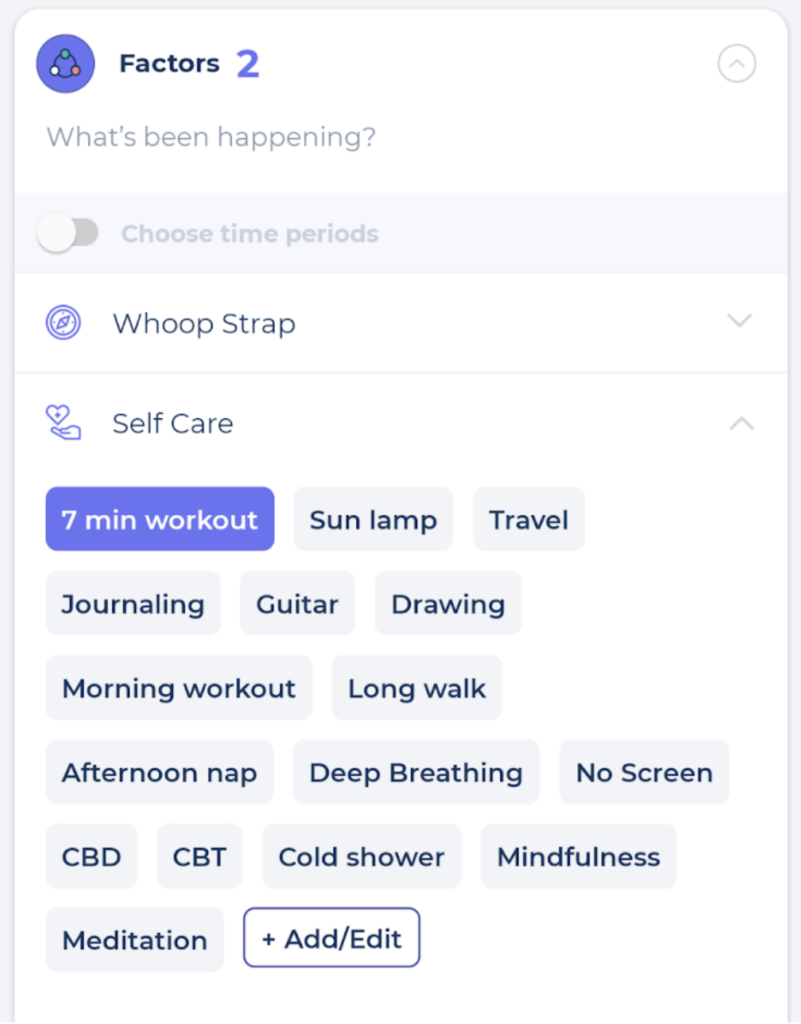
The reason exercise has worked for me in the past is because:
-
- I feel like I’m making an effort to do something about my body image and can be more forgiving of myself as a result.
- The endorphins released from a good workout make me feel better even if they don’t resolve the problem.

What is a seven-minute workout?
The seven-minute workout (I promise this isn’t a paid promotion) is a form of High-Intensity Circuit training (HICT). It’s essentially body-weight exercises like squats, pushups, crunches, and wall-sits. You do each exercise for 30 seconds with a 10-second rest between each one. The initial workout lasts for 7 minutes. But you can level up the difficulty and length of the workouts as your fitness improves. It was specifically designed by a performance coach and exercise physiologist from the Human Performance Institute in Orlando, FL to help busy clients get efficient but effective workouts. The idea being that if you couldn’t spare an hour or even thirty minutes, you could probably spare seven minutes at some point during your day. Basically, it seemed like it ticked all of the boxes. It was free, scientifically proven, I could do it from home, it was made for people with limited time, and it was less daunting than going back to hour-long gym sessions.Seven Days Of Seven Minute Workouts
To help me with these workouts I downloaded a seven-minute workout app. This made it easier to adjust the routines and keep track of my progress. I tracked each workout as a factor in Bearable and logged my health outcomes (mood, energy, sleep, and symptoms) after each session. Day one. I started with the basic 7-minute workout. I was surprised at how quick it was without feeling totally ineffective. It felt positive to workout, even if it was only for a few minutes. Day two. Day one had been so simple that I looked forward to working out again. I doubled up the workout to make it a bit more difficult. Day three. I was a bit sore and that made me feel like the workouts were actually doing something other than just raising my heart rate. If nothing else, I felt like I was making an effort and wasn’t daunted by the prospect of working out again the next day. Day four. I switched up the routine to try some different exercises and ended up increasing the difficulty after the first 7-minute cycle. I also started noticing that my binge-eating was getting worse / more likely to flair up. Day five. I went a bit harder and committed to a 21-minute workout. Possibly from the guilt of having eaten too much the previous day. I enjoyed pushing myself but still ended up feeling self-conscious about my body despite making the effort to work out every day. Day six. I changed the routine again and did a 15min workout. I was really enjoying how easy it was to fit these workouts into the day. I also learned how much I hate wall-sits and planking. Day seven. For once I didn’t slack off or look forward to the end of an experiment. I really enjoyed the format of these workouts, they ticked all the right boxes for me and I didn’t want to stop. They were accessible and made my body feel less useless.What did Bearable say about the impact of 7-minute workouts on my health?
Avg. Mood worsened by 1% Avg. Energy improved by 10% Avg. Symptom Score worsened by 15% Avg. Sleep Quality worsened by 6% Avg. Sleep Quantity worsened by 6%
How did HICT positively affect my symptoms? Binge eating improved by 13% Trouble falling asleep improved by 9% Avoiding appearance improved by 7% Worry about weight improved by 6% How did HICT negatively affect my symptoms? Worrying about communicating worsened by 143% Self-criticism worsened by 94% Avoiding interests worsened by 46% Worry about my body shape worsened by 14% Worrying about my face worsened by 12% Worry about appearance worsened by 4%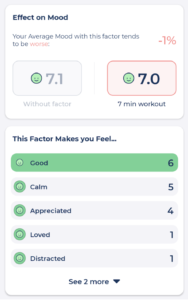
What did I learn about my health by doing HICT every day for a week?
Did it improve my body image in a week? No. But did it feel like it could? Yes! These workouts were flexible, enjoyable, and something I could see myself sticking to. They didn’t force me to repeat old bad habits and they gave me back some of the energy I had lost after getting vaccinated. HICT felt like the start of a positive body-image journey. Going into this experiment, the thing I feared most was that my binge eating would get dramatically worse. Whilst there were certainly days where it felt worse, I was amazed to see that my binge eating had actually improved. In the past, I’ve used more strenuous, longer workouts as an excuse to overeat. Which can then turn into a negative cycle of binge eating that I’m unable to stop or escape from. Because these workouts were shorter – though still difficult enough – I found myself less likely to repeat those habits. Ultimately, I think this is because it’s easier to lie to myself about what I “deserve” to eat after a 3-hour hike or an hour of squats and deadlifts. Whereas, a 7-minute workout doesn’t feel like a genuine way to justify or offset the extra calories. What got worse? Judging by the symptoms above, I became far more self-conscious. To be honest, this was something I kind of anticipated. I often become more self-critical and tend to compare myself to others more when I’m working out. Especially in the early days of a new routine. Whilst these symptoms flaring up isn’t great, I’d likely see the same outcome for any workout. I also knew they’d eventually subside with time. The longer I workout and the more I see the results, the less these symptoms are an issue. Overall, I view this as a positive experience. My mood didn’t really change. In fact, it stayed at a fairly consistent 7 or 8 out of 10 the whole time. My sleep got a bit worse, maybe due to the couple of days where I did eat more calories than normal. Though I was more self-critical about my appearance I also had more energy and found a style of workout that didn’t make me constantly binge eat.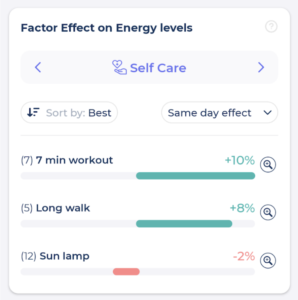
Would I recommend HICT to other people with body image issues?
Yes. I think they’re a great way to get back into a fitness routine after a year of being locked indoors. If like me, you’ve been struggling with fatigue then this is one way to ease yourself back into working out. It’s flexible, scientifically proven, and most importantly; enjoyable! Will it help with your body image? Maybe not immediately but honestly, what workout will? One thing I’ve learned from this experience is that some of my health issues may not be possible to manage with self-care alone. So whilst finding a workout routine I find enjoyable and want to stick to might help me to “look better” and feel healthier in the long run. It’s maybe unwise for me to expect a shortcut to resolving the issues that underpin my body dysmorphia and body image. Instead, view HITC – and specifically the 7-minute workout – as a way to get back onto a path towards better health, energy, and well-being. But, if like me, you’re struggling with body image issues, the best solution might be to speak with a medical professional.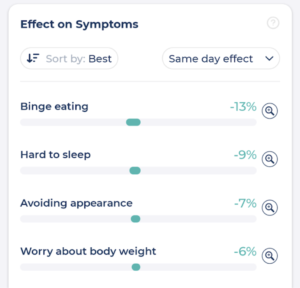 As always, it’s probably wise to speak to a medical professional before committing to anything new that might impact your health anyway. Especially if you decide to skip 7-minute workouts and throw yourself into some more extreme forms of HICT.
If you give the 7-minute workout or HICT a try, good luck.
As always, it’s probably wise to speak to a medical professional before committing to anything new that might impact your health anyway. Especially if you decide to skip 7-minute workouts and throw yourself into some more extreme forms of HICT.
If you give the 7-minute workout or HICT a try, good luck.
Running your own experiments with Bearable?
If you enjoyed this experiment or have run any of your own we’d love to hear about it. You can reach out to us on Instagram at @BearableApp or post your own experiments using bearable using #BearableApp (on Instagram, Facebook or Twitter). — Note: The advice given in this article is not intended as a substitute for medical advice. Please consult a medical professional before undertaking activities intended to impact your health and/or existing medical conditions. Photo credit: freepikCan a SAD Lamp help with Mood & Depression? Jesse used one for a week to find out!
What is Seasonal Affective Disorder (SAD) and how is a lamp meant to help?
It turns out that SAD is an outdated term for major depressive disorder with seasonal patterns (MDD). These seasonal patterns aren’t limited to Wintertime either. The main factor leading to the symptoms of SAD is the amount of light a person is exposed to. Specifically, the way that the chemicals in the brain that help to regulate a person’s body clock (or circadian rhythm) are impacted by changes in exposure to natural light. Thinking of SAD in terms of circadian rhythm might be helpful. For example, a person moving from Iceland to the Mediterranean might be just as affected by the increase in exposure to sunlight as someone moving in the opposite direction. Simply because they would both experience disruptions in the way their brain typically creates the chemicals that regulate their natural rhythm. Symptoms of Wintertime SAD can include:-
- daytime fatigue
- difficulty concentrating
- feelings of hopelessness
- increased irritability
- lack of interest in social activities
- lethargy
- reduced sexual interest
- unhappiness
- weight gain
-
- agitation
- difficulty sleeping
- increased restlessness
- lack of appetite
- weight loss
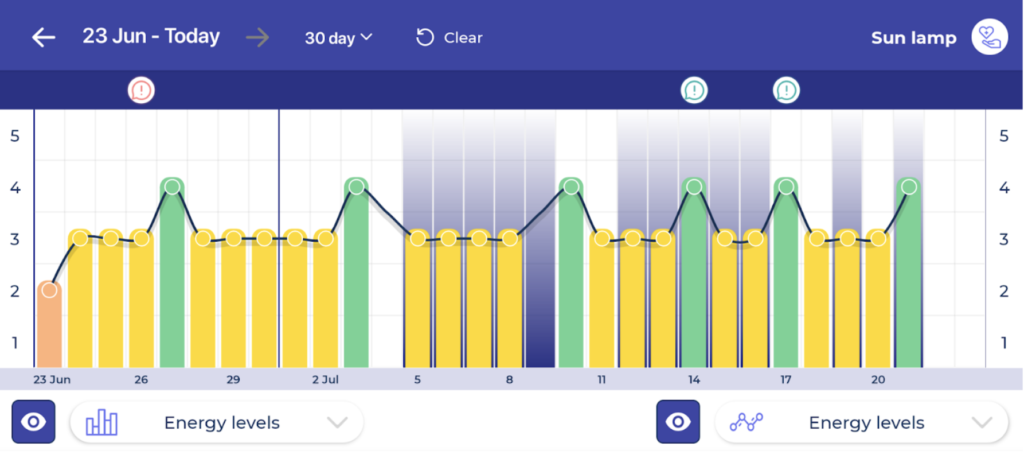
How is a SAD lamp meant to help Mood & Depression?
“Some people with SAD find that light therapy can help improve their mood considerably. This involves sitting by a special lamp called a lightbox, usually for around 30 minutes to an hour each morning. The light produced by the lightbox simulates the sunlight that’s missing during the darker winter months. It’s thought the light may improve SAD by encouraging your brain to reduce the production of melatonin (a hormone that makes you sleepy) and increase the production of serotonin (a hormone that affects your mood).” – NHS Website Ultimately, I wanted to track the impact of using a SAD lamp on my mood and symptoms of depression to see if I was able to balance out the potential impact of changes to my exposure to natural light.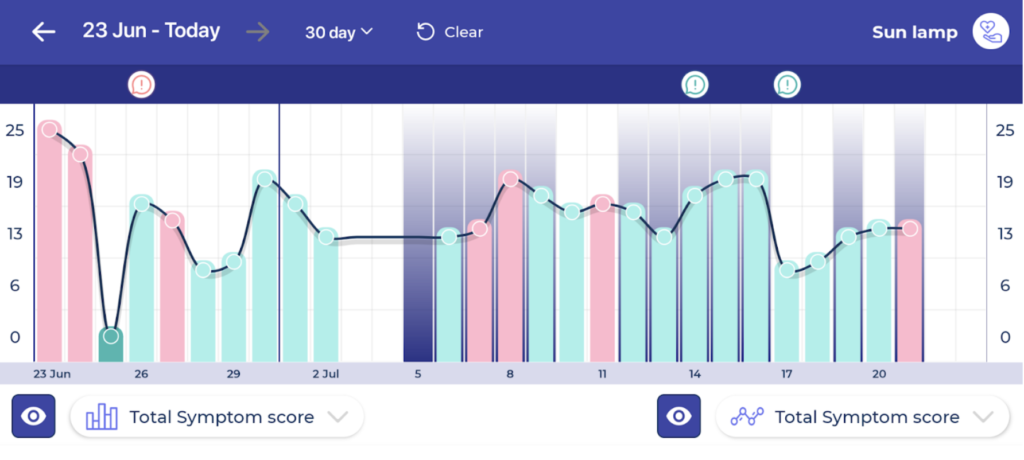
Using a SAD Lamp for a week(ish)
It’s recommended that you consult a doctor before using a SAD lamp as well as limiting your exposure to just 30 minutes each morning. I also tried to get more natural light by walking for 30 mins each morning. Usually, I would write a day-by-day account of my experience and how I felt it impacted my health. However, as this was essentially a passive activity – sitting in front of a lamp whilst I check emails – I feel like it’s not that useful. Instead, I’ve written a list of my main observations:-
- Sitting in front of the lamp felt like it was helping my mood, even on day one. This may have been a placebo effect but either way, I felt better for using it.
- After getting distracted and sitting in front of the SAD lamp for longer than the recommended time. Like, much longer. I noticed my concentration dipping in the afternoons.
- The SAD lamp kind of acts like a ring-lamp for video calls which inadvertently helped me to feel less self-conscious during team meetings.
- After a week, I noticed my sleep pattern fluctuating more than normal. I needed to get up later and felt my sleep quality was possibly being impacted. This could have been the result of overexposure to the lightbox.
- Because I was so sure that the SAD Lamp was having a positive effect on my mood and energy I ended up using it for 12 days without checking the results rather than the usual seven days.
What did Bearable tell me about the SAD lamps impact on my health?
Avg. Mood improved by 0%* Avg. Energy improved by 0%* Avg. Symptom Score worsened by 13% Avg. Sleep Quality worsened by 8% Avg. Sleep Quantity worsened by 8% *Despite there being no significant change in mood and energy the average score for both became more consistent. For example, instead of mood scores varying between 6 and 8 on alternate days, I was more likely to be a consistent 7. How did the SAD Lamp positively affect my symptoms? Lack of energy improved by 61% Binge eating improved by 18% Comparing looks to others improved by 16% Worrying about bodyweight improved by 12% Worrying about body shape improved by 4% Worrying about my face improved by 3% How did the SAD Lamp negatively affect my symptoms? Concentration worsened by 718% Lack of interest worsened by 377% Avoiding interests worsened by 275% Self-criticism worsened by 264% Worrying about communicating worsened by 105% Ability to sleep worsened by 104% Avoiding my appearance worsened by 15% Waking during the night worsened by 14% Worrying about my appearance worsened by 7% Other factors that may have contributed to these results include:-
- Increasing my intake of processed foods
- Switching to a less strict fasting routine
- Changing the supplements that I take
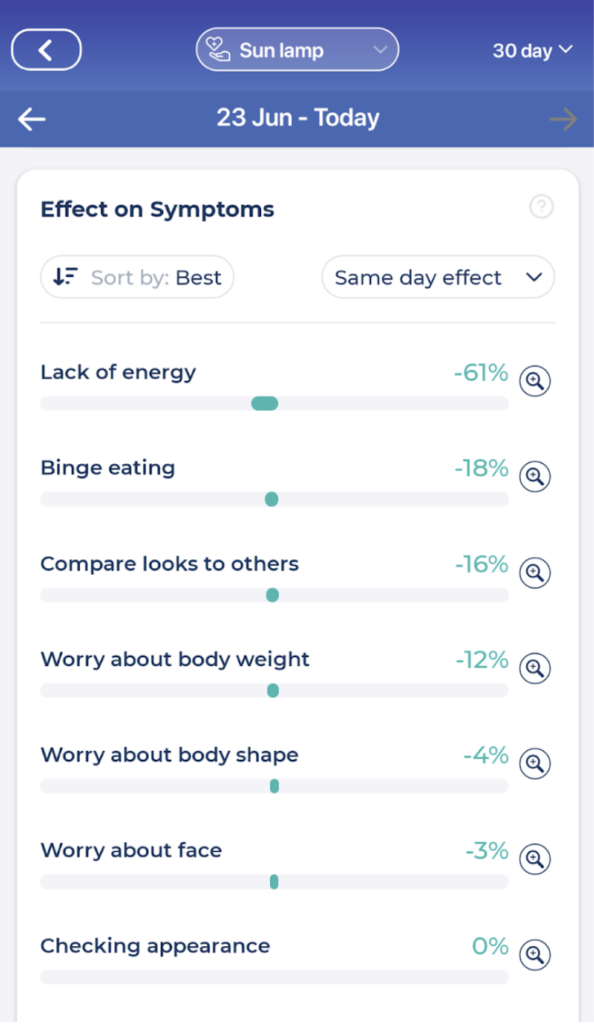
What did I learn about my health by using a SAD Lamp?
Overall, I feel like it had some positive effects. Especially on the consistency of my mood and energy levels. It also made me feel like I had more energy – which is possibly a placebo effect – but still a positive outcome. Some of the symptoms of my Body Dysmorphia such as worrying about my body weight and shape improved too. I think the negative effects on my symptoms can also be attributed to over-exposing myself to the SAD Lamp. I definitely had more than 30mins exposure almost every day. Mostly because I’d get wrapped up in work and forget to turn it off. My loss of concentration on days that I used the lamp is also concerning and way more extreme than I realised during the experiment. It possibly correlates with increased restlessness which is a side-effect of using the lamp for too long. Being more self-critical and avoiding my interests more than usual were the other negative changes in my symptoms. These might also go hand-in-hand with having less concentration. Often my mind will race from one thought to another and the loss of focus can lead to me wasting time scrolling through social media or having negative thoughts about myself. The main lesson I learned from using the SAD lamp is not to abuse its power. It clearly improves the consistency of my moods but overuse can also lead to some pretty significant side effects.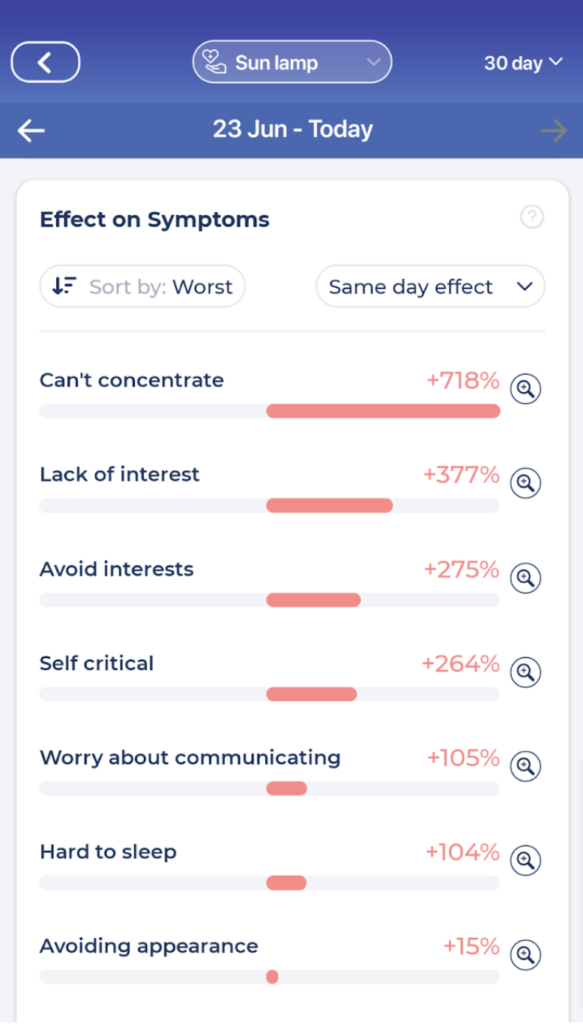
Should you use a SAD Lamp to help with your Mood and Depression?
I think I didn’t see enough of a positive change in my symptoms or mood to be able to confidently recommend the SAD Lamp. That said, SAD lamps can affect different people in different ways. If you’re someone that knows they suffer from Seasonal Affective Disorder and have a medical professional approve it, I’d 100% suggest that there’s nothing to lose by trying it. I think what surprised me most about this test is how little I was able to perceive the negative effects in real-time. With this in mind, I’d recommend tracking your symptoms for a few days before using a SAD lamp so that you can stay on top of the effect it’s having. As with other mental health issues that affect mood; Talking therapy, Cognitive Behavioral Therapy (CBT), and other therapies are also recommended for helping with SAD. I certainly saw a generally more positive impact on my symptoms when trying CBT last month. If you do try using a SAD Lamp make sure to consult a medical professional first and don’t be an idiot like me by over-using it and destroying what little concentration you had to begin with. Good luck.Running your own experiments with Bearable?
If you enjoyed this experiment or have run any of your own we’d love to hear about it. You can reach out to us on Instagram at @BearableApp or post your own experiments using bearable using #BearableApp (on Instagram, Facebook or Twitter). — Note: The advice given in this article is not intended as a substitute for medical advice. Please consult a medical professional before undertaking activities intended to impact your health and/or existing medical conditions. Photo credit: freepikCan getting more exercise help your insomnia? Jesse walked 10,000 steps a day to find out.
So what does this have to do with insomnia?
I’ve had insomnia for as long as I can remember. As a child, I would lay awake for hours staring at the ceiling and this has never changed. There have been short periods where it might get a bit better or worse. But whether I like it or not; I’m a full-blown insomniac. To add insult to injury, the symptoms have become even worse during the pandemic. I’ve more frequently found myself awake at 4 am for no reason at all. Fretting about having to get up in a few hours and attempt to be a productive human being. I’ve tried melatonin, sleep hygiene, no-screens, sleep apps. All the things. So what else is left to try? Last week I listened to an interview with the founder of a sleep app who admitted that the only thing that has ever helped him sleep has been physical exhaustion. This got me thinking that perhaps there was a link between the decline in my steps and the increase in the symptoms of insomnia. There was only one thing to do about it: see if walking more helped me to sleep a little better.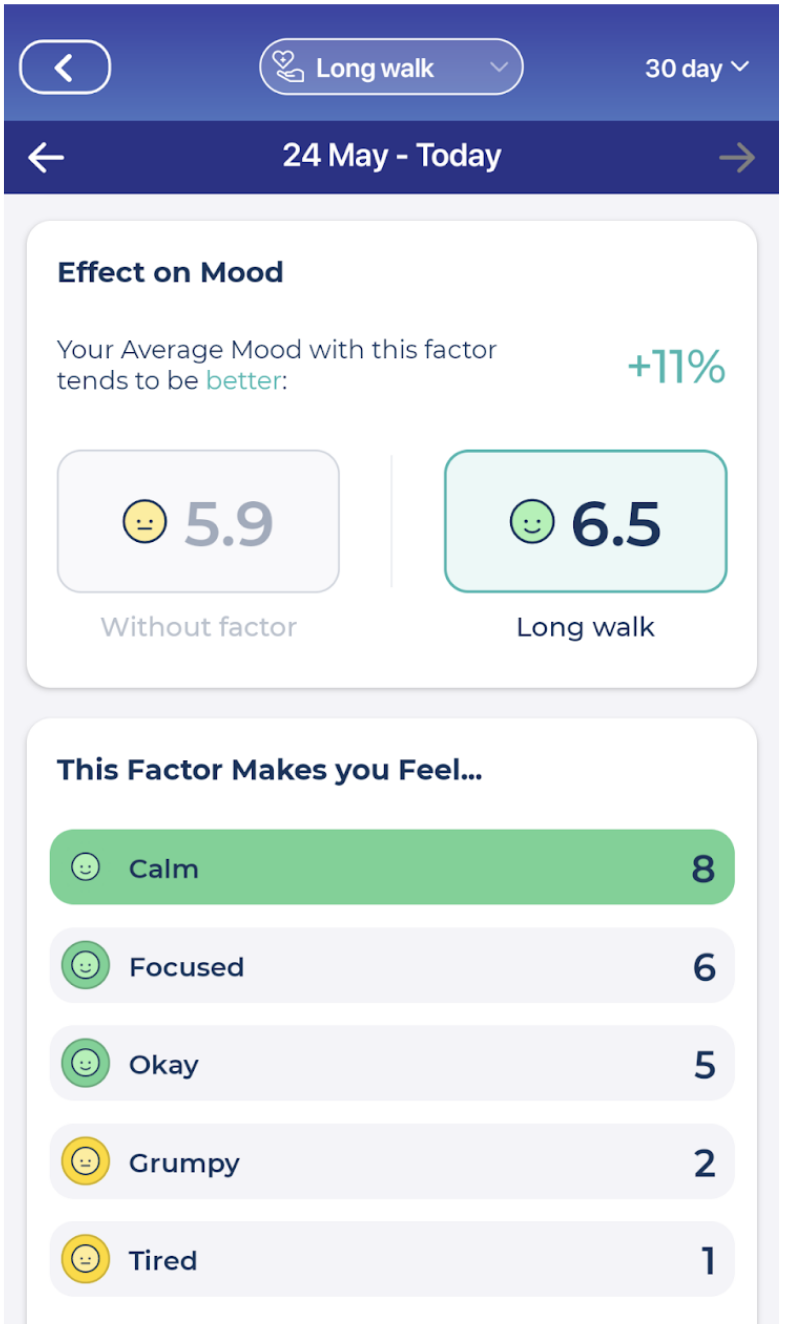
This sounds an awful lot like that walking 10,000 steps a day thing
Yeah, kind of. At this point, I’m sure that most people are aware of the fairly ubiquitous suggestion that walking 10,000 steps a day is good for your health. 10,000 steps has some shady roots. It began life as an advertising campaign for pedometers before the 1964 Tokyo Olympics. However, it seems to have stuck around for good reason. While 10,000 steps is arbitrary in itself, it handily ensures that you meet the recommended weekly exercise requirements outlined by the CDC. Interestingly, there are no large scale studies to show that 10,000 steps is more effective than 5,000 steps at keeping you healthy or alive. BUT there is evidence that shows that:-
- The more exercise you do the better (within reason)
- That walking more than 5000 steps a day can factor into helping you to live longer
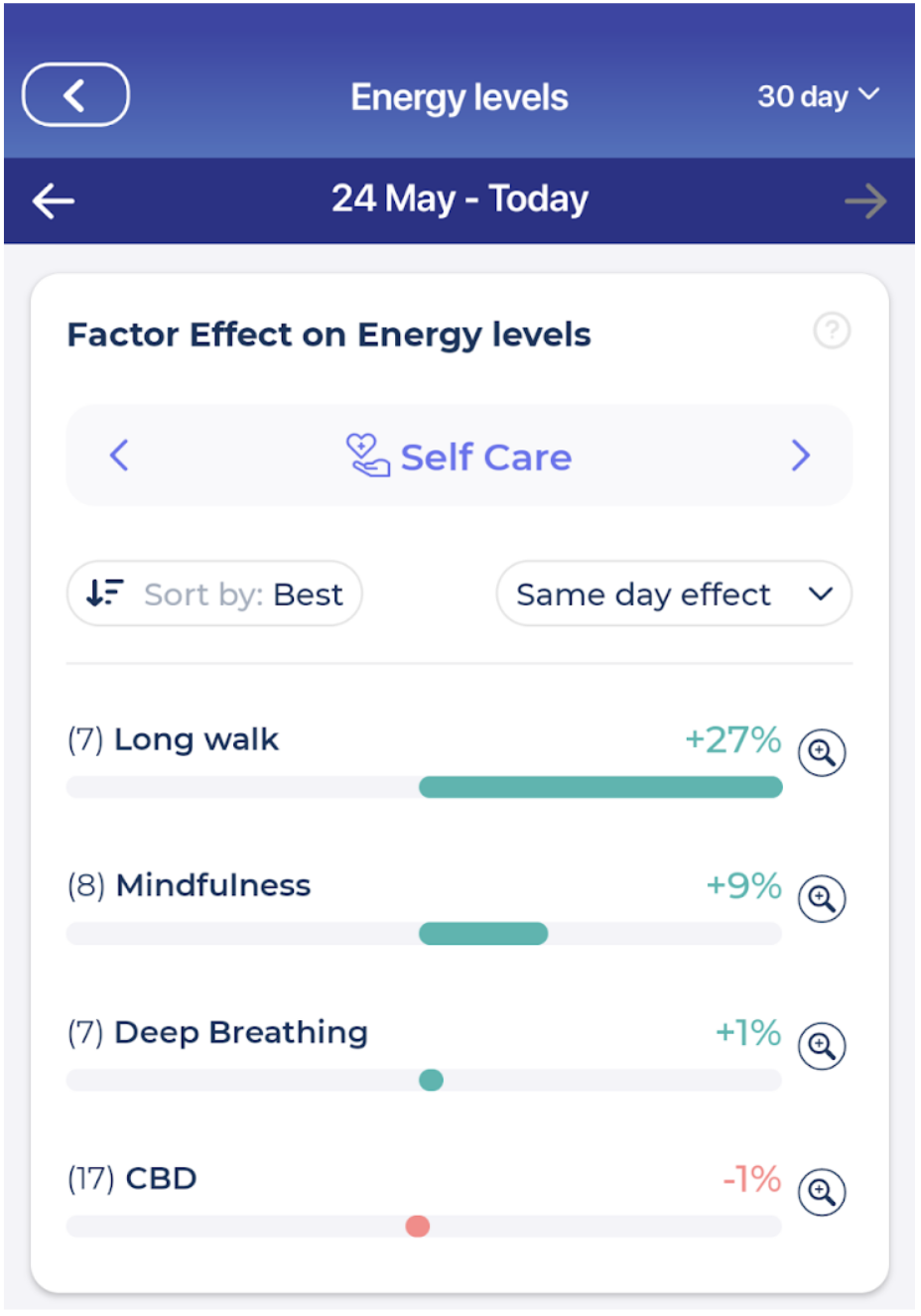
Walking 10,000 steps a day for a week
10,000 steps is roughly 5 miles, so I planned a route around the cliff tops and bays near my home. The benefit of this walk was that it was through fields, along beaches, and up the side of rocky coastal paths. Which I hoped would make me (and the dog) a bit more exhausted. I made sure that I’d finish the walk at least 4 hours before going to bed so that it wouldn’t disrupt my sleep and made sure to stay as hydrated as possible along the way.Day one: I walked 15,454 steps. About seven miles across the course of the day. This included a 4,500 step dog walk in the morning. It was a warm sunny Saturday and this made wanting to walk in the evening easy.
Day two: I walked 12,522 steps. About 5.5 miles. Walking along the cliffs was a nice way to end the weekend and to begin thinking about the week ahead.
Day three: 14,137 steps. About 6 miles. I walked for an hour in the morning so took a shorter route in the afternoon. I also began bringing someone with me on the walk. This made the time pass a little faster.
Day four: 13,806 steps. Between 5.5 and 6 miles. Walking on weekday evenings was a nice way to separate work life and real life. Colder, greyer days made it a bit more difficult to want to go but I still enjoyed the walk.
Day five. 11,158 steps. About 5 miles. I was starting to get lazier in the mornings because I knew I’d be walking in the evening.
Day six. 13,516 steps. Approx. 5.5 miles. I added a couple of short walks during the day because of the nice weather.
Day seven. 10,701 steps. Approx. 5 miles. I was a bit lazy because it was the “last day” and I also had to run some errands in the evening.
Overall, I felt the experience was helping with my anxiety more than my insomnia but what did the data in bearable tell me?The impact of 10,000 steps a day on my health
Average Mood Score improved by 11% Average Symptom Score improved by 39% Average Energy Levels improved by 27% Average Sleep Quality improved by 3% Average Sleep Quantity improved by 1%Some of my most improved symptoms were
Avoiding People improved by 83% Irritability improved by 79% Avoiding my interests improved by 59% Fear of criticism improved by 59% Lack of motivation improved by 48% Tiredness improved by 47%The symptoms that became worse were
Avoiding my appearance increased by 119% Finding no enjoyment in things increased by 37% Comparing my looks to others increased by 25% Binge eating increased by 25% Worrying about my appearance increased by 14%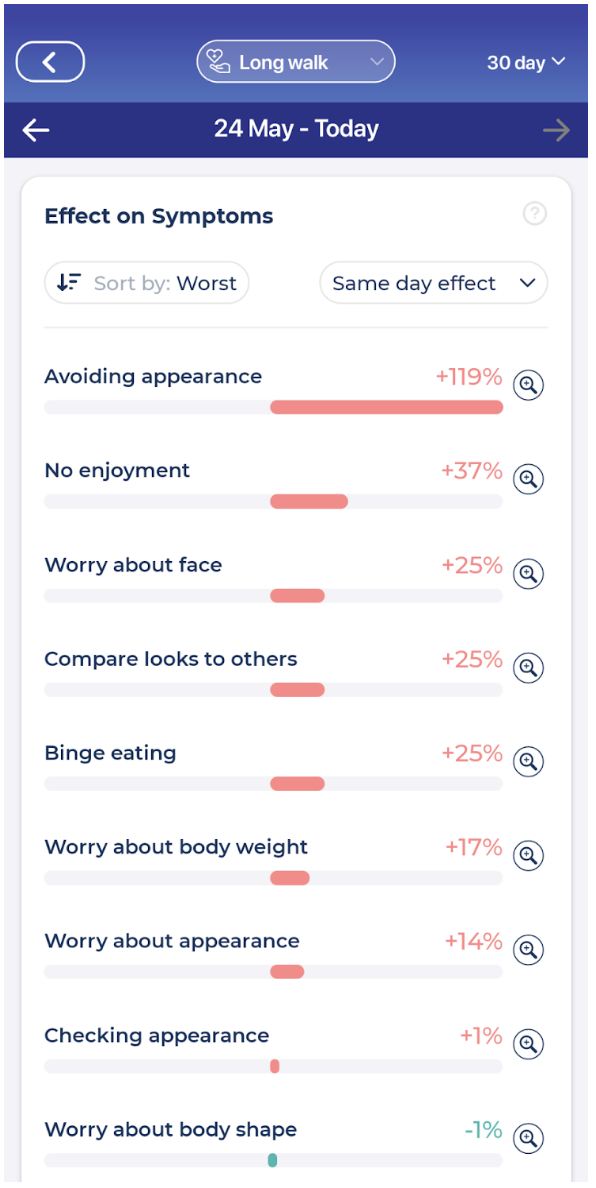
My thoughts on the experience of walking over 10,000 steps a day for a week
I set out on this journey with the aim of improving my sleep and that didn’t really happen. What’s not totally clear in this data is that whilst I slept roughly the same amount as normal, I was also sleeping a lot earlier than usual. My bedtime changed from about 1 am to 10:30 pm, this meant I was able to wake up earlier in the mornings and generally start the day in a more relaxed way. My mood and energy did improve and I found that I felt more balanced, calm, focused, and less tired during the day. I even began some new online drawing classes that I’d been putting off. The biggest problem I had with this new routine was that it didn’t initially pair well with intermittent fasting (something I’ve been doing for about 3 years). After my 90 minute walks, I’d get home and feel hungry but wasn’t meant to be eating. This triggered episodes of binge eating during the days to try to avoid feeling hungry later on. In turn, binge eating (a symptom of my disordered eating) caused symptoms of my BDD to flare up. Things like avoiding my appearance, being self-critical, comparing my looks to others, being overly concerned about my weight, etc. Despite this, I’ve continued to walk over 10,000 steps a day and now – about 2.5 weeks after my first walk – my binge eating and BDD are more under control. Overall, I’ve found that walking over 10,000 steps a day has been pretty great for my overall health, mood, and well being. Even if it hasn’t really done much to improve my sleep.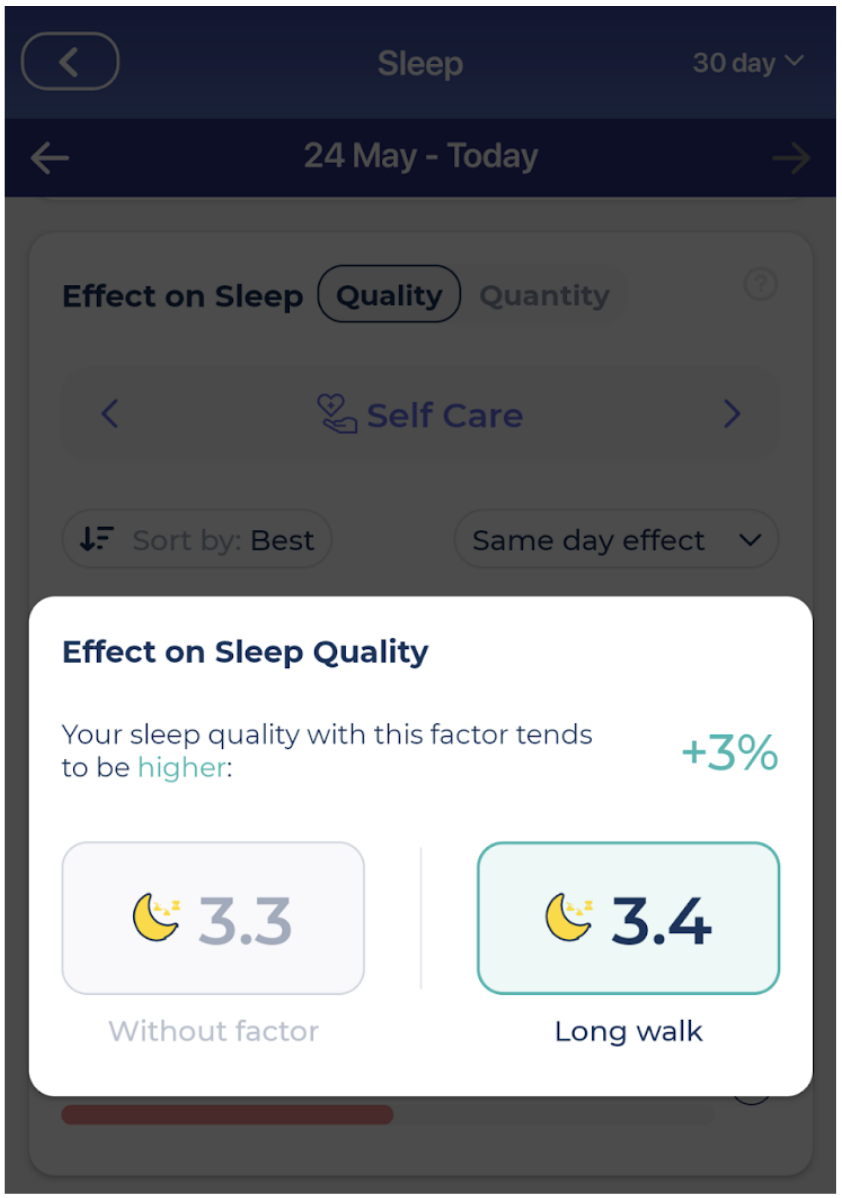
Would I recommend walking over 10,000 steps a day?
Yes… BUT, as mentioned earlier, I don’t think it’s the number of steps that count, or even the steps themselves. What strikes me as being important here is:-
- Spending more time outdoors
- Recognising when you’re getting lazy
- Setting achievable goals for yourself
- Getting some form of exercise every day
Running your own experiments with Bearable?
If you enjoyed this experiment or have run any of your own we’d love to hear about it. You can reach out to us on Instagram at @BearableApp or post your own experiments using bearable using #BearableApp (on Instagram, Facebook or Twitter). — Note: The advice given in this article is not intended as a substitute for medical advice. Please consult a medical professional before undertaking activities intended to impact your health and/or existing medical conditions. Photo credit: FreepikCan Writing A Journal Improve Your Health? Jesse Kept A Diary For A Week To Find Out.
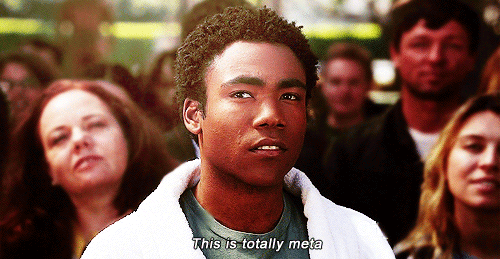 To be clear, I’m not talking about simply tracking the impact of using Bearable on my health but the impact of spending 20 minutes a day writing expressively in a journal.
More than anything, I want to track the impact that consciously working through negative thoughts can have on my health. With the aim of answering the question: Is there an advantage to writing a journal as well as keeping track of my symptoms, factors, sleep, etc.?
With good reason too.
Journaling has become a trend in the productivity, self-care, and self-improvement spaces. With more and more notebooks and apps pushing their users to set goals, read motivational quotes, and bullet their tasks for the day/week/month/year.
So it’s important to ask: Does journaling really work?
To be clear, I’m not talking about simply tracking the impact of using Bearable on my health but the impact of spending 20 minutes a day writing expressively in a journal.
More than anything, I want to track the impact that consciously working through negative thoughts can have on my health. With the aim of answering the question: Is there an advantage to writing a journal as well as keeping track of my symptoms, factors, sleep, etc.?
With good reason too.
Journaling has become a trend in the productivity, self-care, and self-improvement spaces. With more and more notebooks and apps pushing their users to set goals, read motivational quotes, and bullet their tasks for the day/week/month/year.
So it’s important to ask: Does journaling really work?
How is journaling supposed to impact your health?
Journaling is a form of expressive writing or writing therapy that enables “the writer to gain mental and emotional clarity, validate experiences and come to a deeper understanding of him/herself” through self-reflection. Essentially, it’s a way of expressing your thoughts and feelings without having to talk about them. As a result, it’s possible to obtain some of the benefits that people might often associate with something like therapy. In fact, studies have found that journaling has helped to improve mental health, heal wounds faster, and lead to fewer visits to the doctor. However, it’s important to point out that some studies have shown that journaling doesn’t help everyone. So who can it help?-
- People that struggle to talk about their feelings
- Introverted people
- People who struggle to concentrate or organise their thoughts
- People with little social support
- People with high levels of social constraints
- People who have issues with their memory
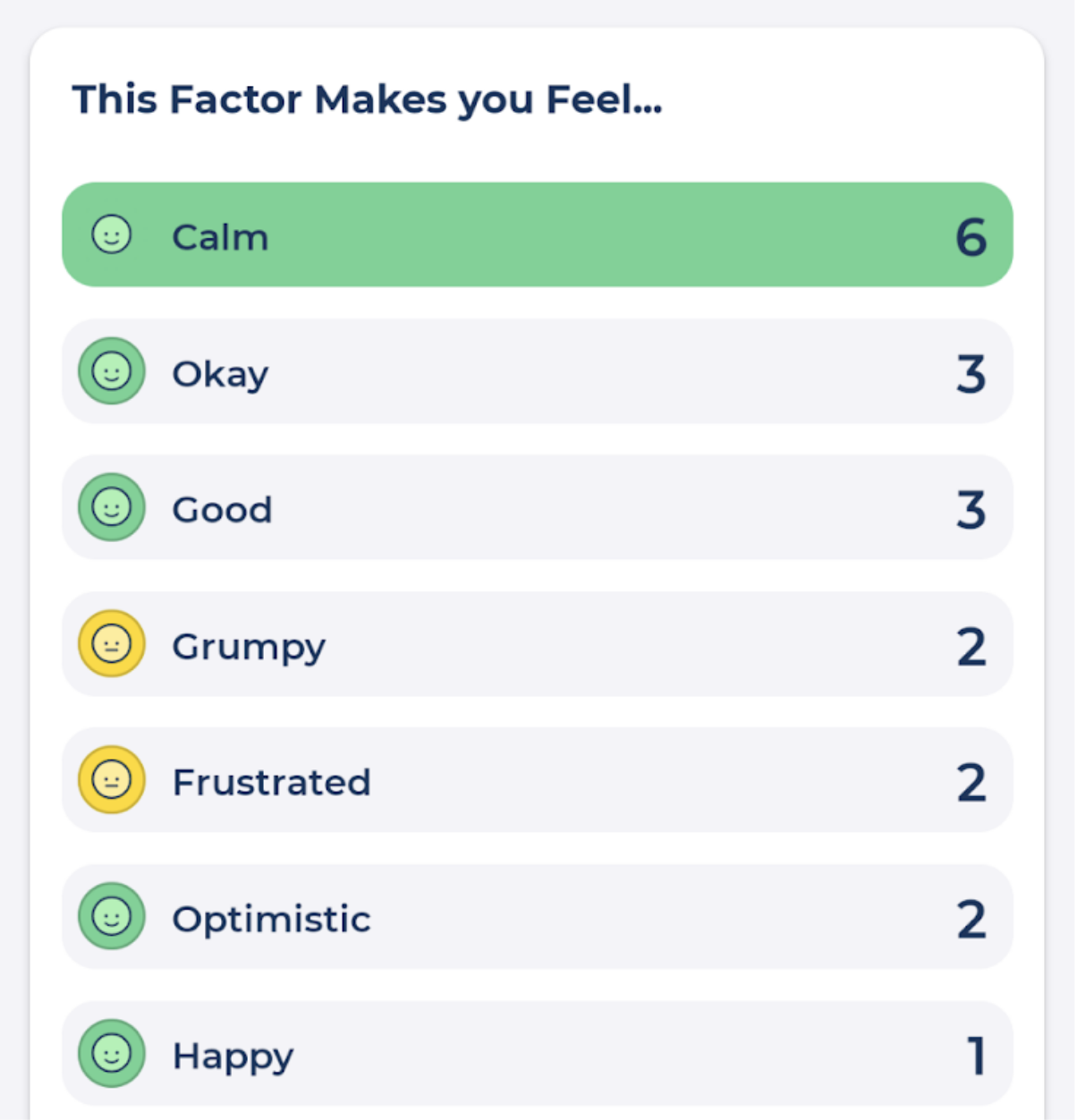
Isn’t journaling just writing a diary?
It can be. But studies suggest that expressive writing can be more impactful than simply keeping a diary. Often, journaling is most useful when it’s practised daily and it’s recommended that you commit to 20 minutes every day for four days. At least during times when you need to work through specific challenges in your life. As a quick overview of how to practice an effective form of expressive writing or journaling:-
- Find a quiet place
- Write continuously for 20 minutes
- Write about something that’s personal and important to you
- Don’t worry about spelling or grammar
- If something feels too difficult to write about, don’t write about it
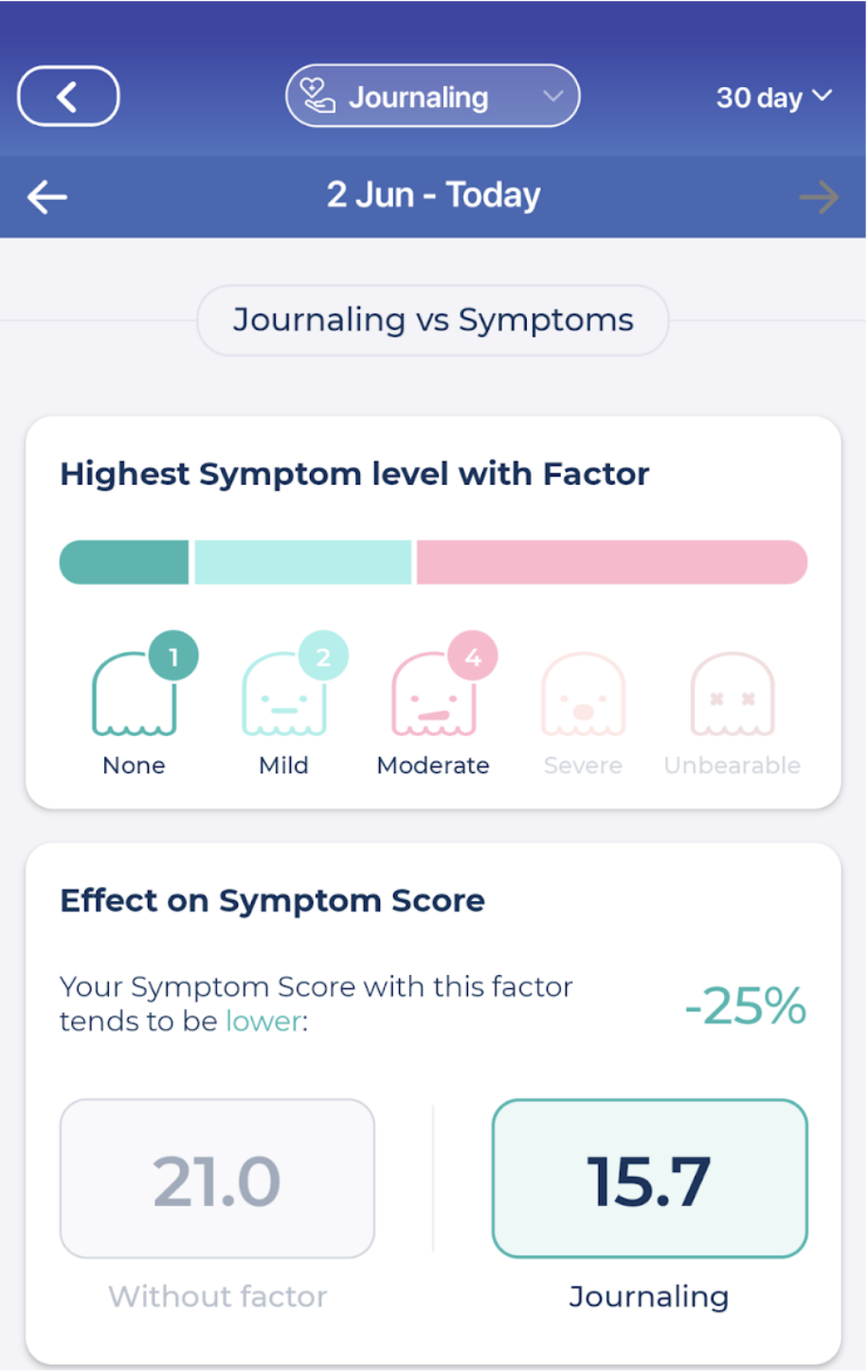
How was my first week of writing a journal?
Instead of a pen and notepad, I decided to write my journal using the notes section in Bearable. This way I’d be able to see the impact of specific notes on my symptoms, mood, sleep, and energy.Day One: I sat down with my pad and pen and didn’t really know what to write about. After about 5 minutes I began by writing a normal diary entry; things I did that day. It quickly became easy to allocate the thoughts that I needed to journal about.
Day Two: I was incredibly grumpy and stressed but I was struggling to figure out why. Journaling came a bit more easily when I had a specific problem that I wanted to think about and understand.
Day Three: The symptoms of my depression had been getting worse and I was feeling a bit hopeless and lacked any energy or motivation. Writing the journal became an act of gratitude. I tried to write about all the things that I appreciated and felt good about.
Day Four: I wrote about an ongoing issue in my personal life. It felt good to externalise some of my thoughts but it also left me feeling a bit sad.
Day Five: I was incredibly grumpy again and was struggling to understand why. Journaling helped me to gain some perspective and see a bigger picture. Whilst it didn’t resolve the issue, it at least helped me to understand my mood.
Day Six: I was in a very good mood. With no big problems to resolve today, I wrote about why I was happy as a reminder to myself, something to reflect on. I also spent some time planning some goals and tasks to work towards.
Day Seven: I was in another good mood and struggled to have anything to write about. I ended up exploring the ideas behind why I was happy, what was making me happy, why it was making me happy, and how I could try to ensure that I had more of these experiences in my life.
What did the data in Bearable tell me about the impact of journaling on my health?
Average Mood Score improved by 10% Average Symptom Score improved by 25% Average Energy Score improved by 8% Average Sleep Quality worsened by 4% Average Sleep Quantity worsened by 2%How were symptoms of Anxiety, Depression, Insomnia, and BDD impacted by journaling?
Binge eating improved by 86% Being self-critical improved by 69% Avoiding people improved by 69% Tiredness improved by 67% Difficulty sleeping improved by 39% Lack of interest improved by 21% Avoiding my appearance worsened by 40% Worrying about my body shape worsened by 16% Worrying about my weight worsened by 8%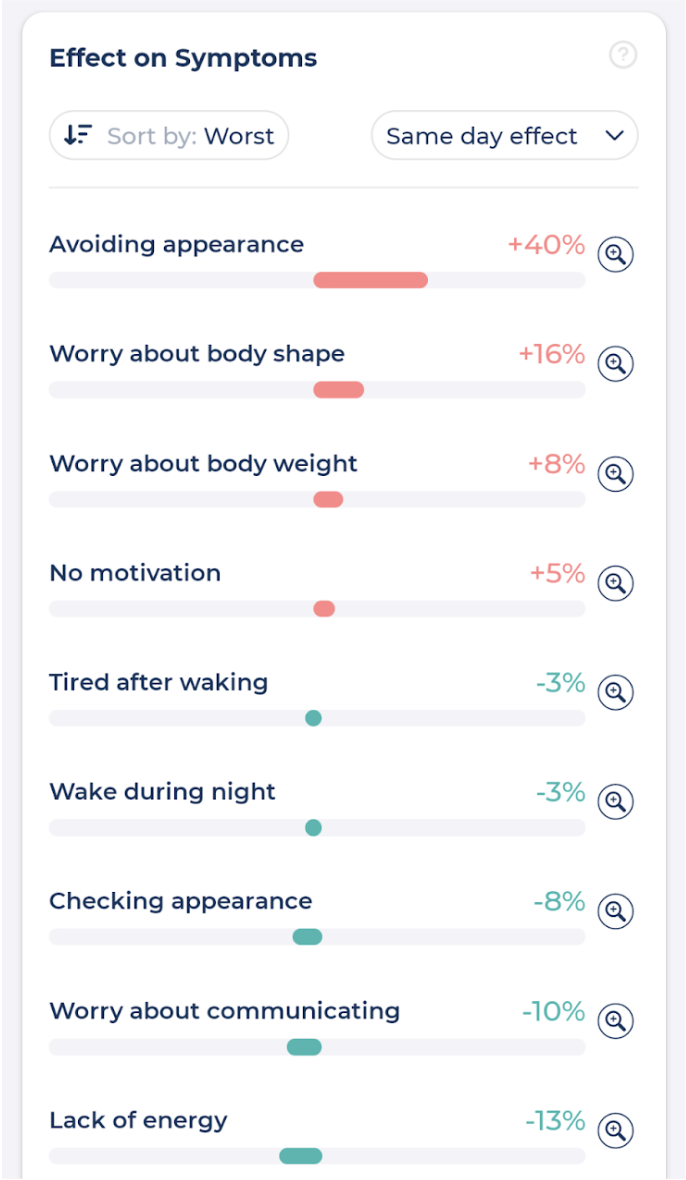
What impact did journaling have on my health?
This experiment coincided with a period when symptoms of my body dysmorphia and disordered eating were worse than they had been for some time. So it’s of interest to me to see how journaling impacted these symptoms as well as others. Overall, I think journaling helped me to:-
- Better understand problems
- More quickly understand root causes of problems
- Identify solutions to problems
- Feel better about problems
- Find ways to communicate my problems with others
- Organise my thoughts, plans, and intentions
-
- I dwelled on, or over-thought some problems
- Problems without solutions caused me frustration
- I often felt down or sad after writing and this didn’t always go away
- I dug up some problems that were better left buried
- I tended to compare myself to others more often
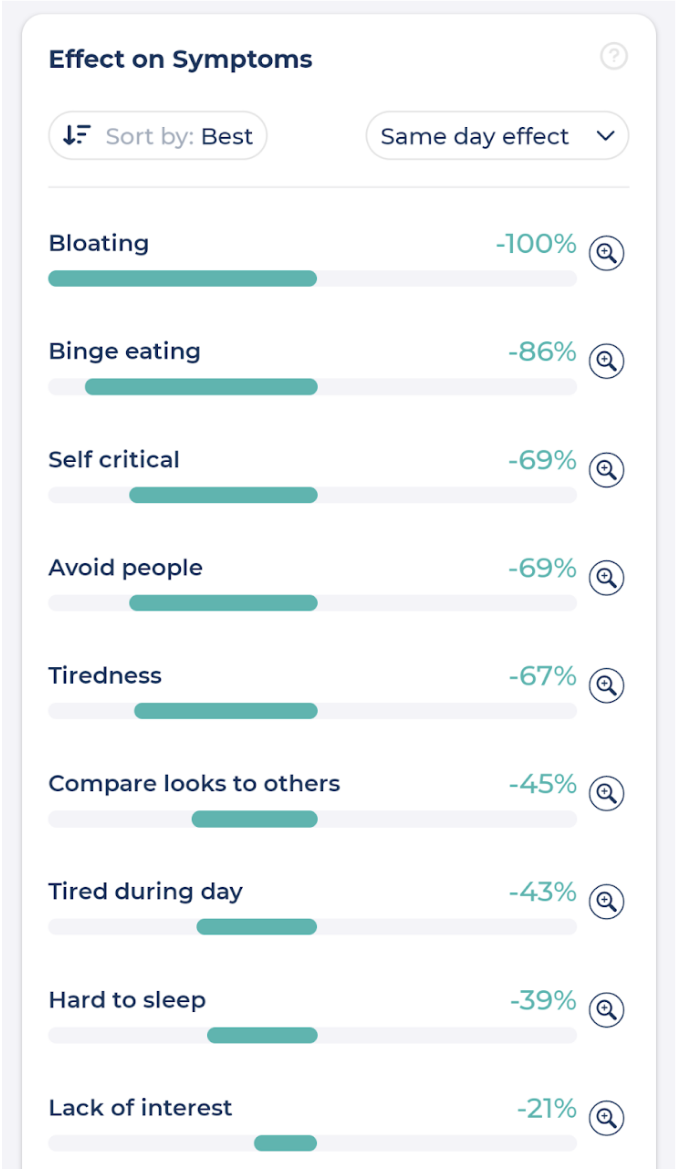
One Reason You Should Try Journaling.
Journaling was quite a mixed experience for me but you might be one of the people that it works wonders for. I certainly feel it was more of a positive than a negative experience and was able to see the benefits after just a day or two of writing. On the days when journaling helped me, it felt like I gained some much-needed clarity and focus. Writing expressively forced me to dig a bit deeper into the reasons behind my thoughts and actions. So If you’re someone that’s interested in getting to know themselves better, then I wholeheartedly recommend that you try journaling. This is especially true if you’re someone that knows they struggle to share their thoughts or feelings with other people. Or if you’re someone that wants to experiment with new ways of organising, planning, and solving problems in their day-to-day life. Journaling is recommended as a complementary therapy alongside forms of talking therapy and I can see how it might help someone to reflect on and organise their thoughts around counselling sessions. Or just to find alternative ways to communicate with a therapist. I’ll continue to journal on days when I can’t figure out why I’m in a terrible mood and maybe this is a good place for you to start too. If you give it a try, good luck. —Running your own experiments with Bearable?
If you enjoyed this experiment or have run any of your own we’d love to hear about it. You can reach out to us on Instagram at @BearableApp or post your own experiments using bearable using #BearableApp (on Instagram, Facebook or Twitter). — Note: The advice given in this article is not intended as a substitute for medical advice. Please consult a medical professional before undertaking activities intended to impact your health and/or existing medical conditions. Photo credit: FreepikCan CBT help with anxiety and depression? Jesse tried CBT for a week to find out!
“I know you’re depressed but have you tried getting out of bed and going for a nice long walk?”The annoying thing that I’ve learned – since deciding to swallow my pride more often – is that sometimes these suggestions are useful. The person suggesting that you get up and go for a walk is annoying because it dismisses how difficult that can be for a person in the midst of a crisis. Or who just has so little energy or motivation that they barely feed themselves. But let’s be honest, getting up and going for a walk can help. We just don’t need to hear it from someone that has zero experience with depression. So, having recently had a positive experience with many of these other generic recommendations. I had some hope that CBT might actually help too.
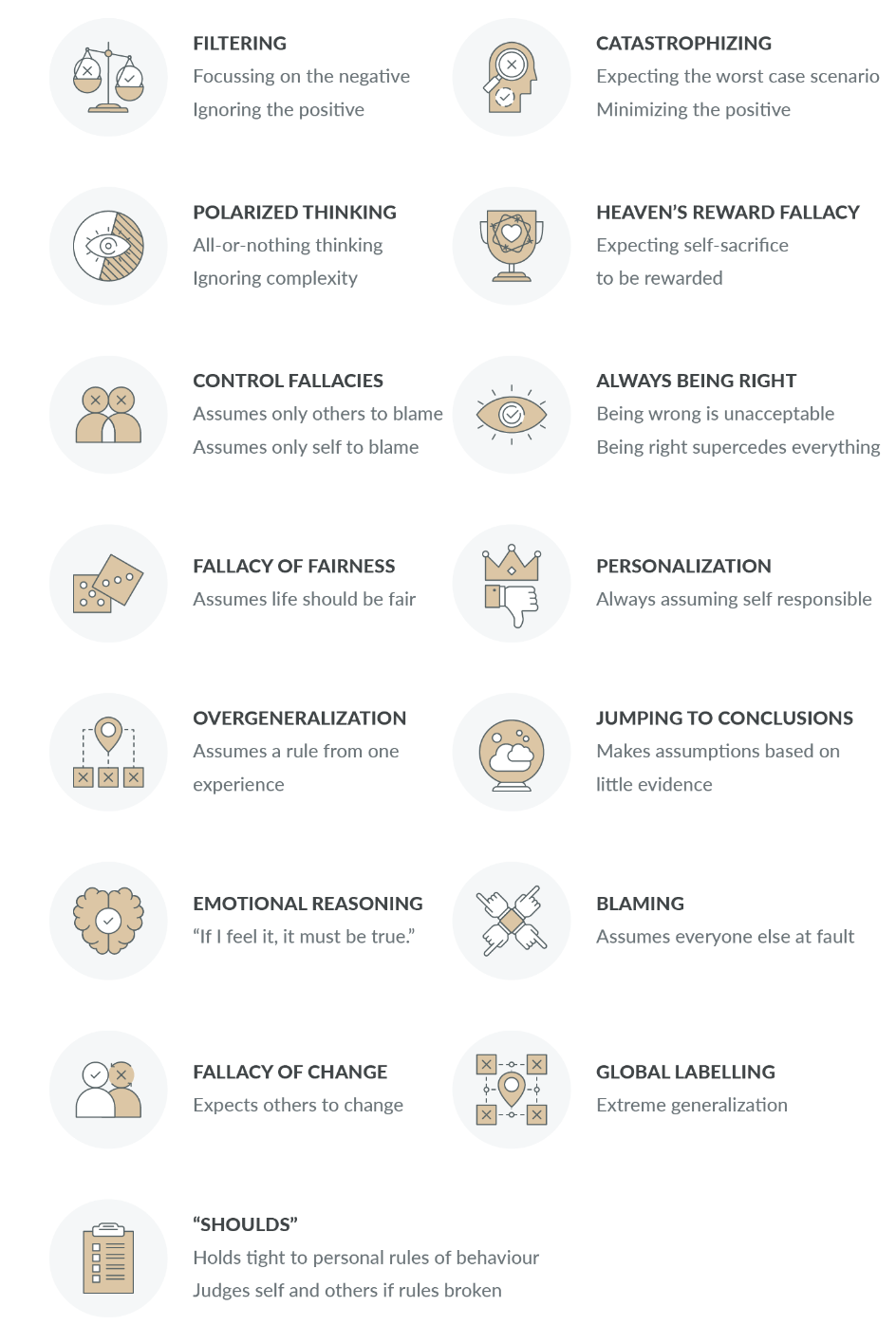 An infographic of cognitive distortions from positivepsychology.com
An infographic of cognitive distortions from positivepsychology.com
So what is CBT?
“Cognitive behavioural therapy (CBT) is a type of talking treatment which focuses on how your thoughts, beliefs and attitudes affect your feelings and behaviour, and teaches you coping skills for dealing with different problems. It combines cognitive therapy (examining the things you think) and behaviour therapy (examining the things you do).” – Mind.orgEssentially, CBT aims to help you recognise negative thought patterns, challenge them, and form more balanced and effective thought patterns or behaviours. Negative thought patterns are typically referred to as Cognitive Distortions and they fall into one of fifteen categories. I won’t write about them all here, but the ones that felt most familiar to me are:
-
- Filtering. Ignoring all of the positive and good things in life and focusing on negatives
- Catastrophizing. Expecting that the worst will happen or has happened
- The fallacy of fairness. Expecting that things in life should be fair.
- Heaven’s Reward Fallacy. Expecting that any sacrifice or self-denial will pay off.
-
- Write down the negative thought
- Identify all the cognitive distortions relevant to the thought
- Write down the reasons the thought might not be true
- Write down a new version of the original thought without the distortions (sometimes referred to as an alternative thought)
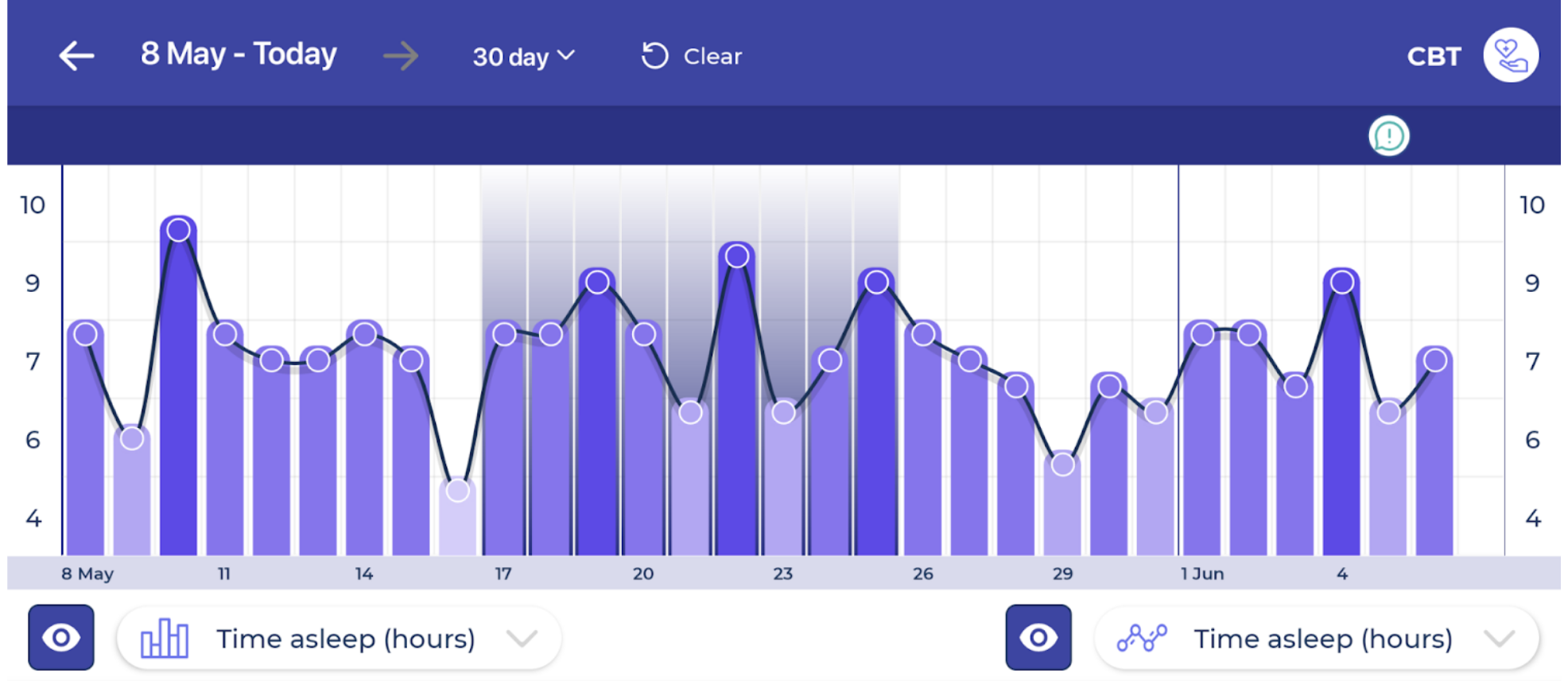 A chart from Bearable showing how CBT correlated with more hours of sleep (most of the time).
A chart from Bearable showing how CBT correlated with more hours of sleep (most of the time).
7 days of daily CBT sessions
From day one, the limitation was that I had to recognise when cognitive distortions were taking place in order for me to try to combat them. As many people reading this will know; negative thoughts can be such normal occurrences that they’re hard to spot before they begin spiralling. By journaling my thoughts as part of the practice of CBT, I actually became better at this. However, I often caught my negative thoughts a little too late. Day one: I woke after an anxiety dream and it was the perfect way to immediately test the impact of CBT. Writing down my thoughts helped me to recognise the cognitive distortions I was experiencing. Creating an alternative thought helped to ground me and acknowledge that my dream had no bearing on reality Day two: A common occurrence for me; I began feeling anxious about the contribution I was making at work and how this might be perceived by my colleagues. CBT helped me to recognise that these feelings were unfounded and that I often received positive feedback from colleagues. Day three: I was quick to assume that work undertaken by a colleague was a criticism of my own work. I spotted this early and recognised that I was focusing on negatives and jumping to conclusions based on past experiences. CBT helped me to spot that my colleague just wanted to collaborate on something he enjoyed being a part of. Day four: I woke up from another anxiety dream. This time about my dog. I felt that something terrible would happen that day as a result of the dream. CBT helped me to spot that my dream had no impact on reality and that I was thinking catastrophically. Not to mention blaming myself for something that hadn’t actually happened. Day five: I get anxious ahead of team calls and worry that I’ll say something dumb or that people will think I haven’t contributed anything. Using CBT before the call helped me to feel calmer and more focused by taking away some of this anxiety. Day six: Weekends are interesting because I often spiral – at least during the pandemic – because I feel I’m not contributing towards something productive. CBT helped me to recognise that I needed to find a better work-life balance. I ended up signing up for some online classes. Day seven: I usually spend Sunday morning’s reading the news and scrolling social media and it can lead to me feeling a bit hopeless or frustrated with the world. CBT helped me to recognise I was focusing on negatives and overgeneralizing.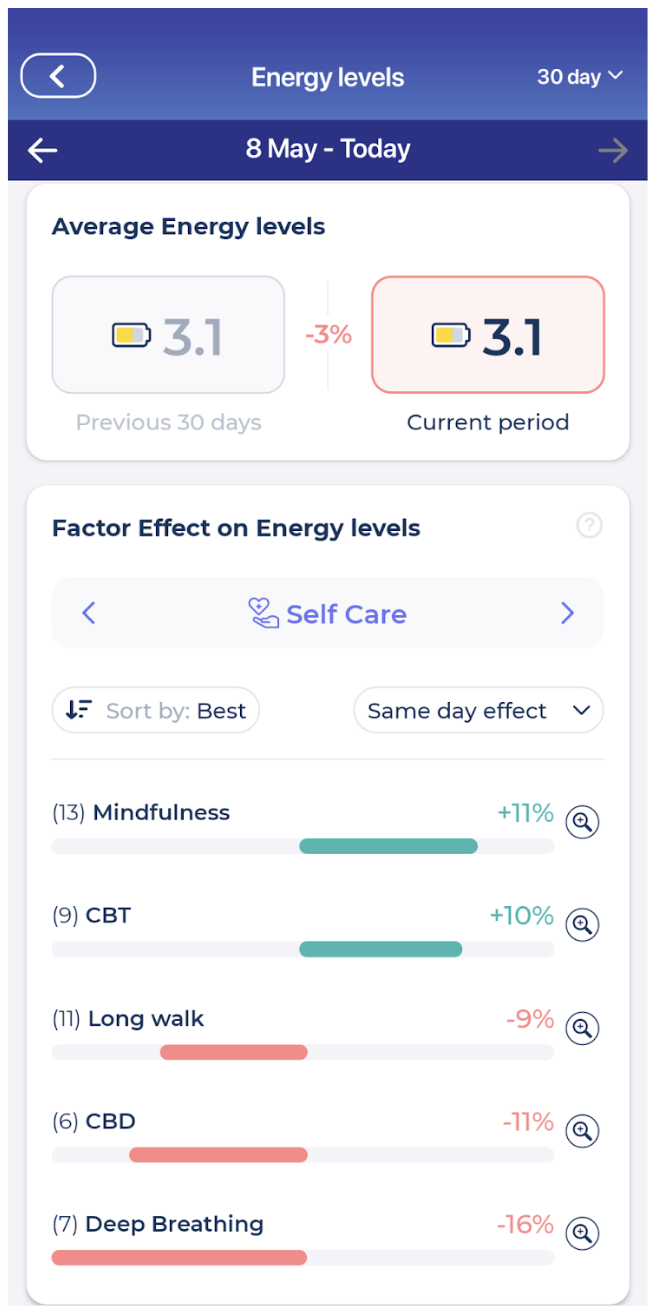 A chart showing how CBT correlated with a positive impact on my energy levels
A chart showing how CBT correlated with a positive impact on my energy levels
What did the data in Bearable show me about the effect of CBT?
Average Mood improved by 1% Average Energy Levels improved by 10% Sleep Quality improved by 8% Sleep Quantity improved by 9% Total Symptom Score worsened by 7%What impact did CBT have on my specific symptoms?
Feeling worried improved by 37% Binge eating improved by 33% Insomnia improved by 31% Apathy improved by 9% Irritability improved by 8% Catastrophic thoughts improved by 2% Doubting value of contribution improved by 6% Tired during the day worsened by 114% Restlessness worsened by 82% Being Self Critical worsened by 36% Worry about appearance worsened by 18% Behaviours associated with nervous energy worsened by 10%How did I feel CBT had impacted the symptoms of my anxiety and depression?
Overall, I don’t think it had a huge impact on the symptoms themselves. I still experienced all of the same symptoms that I would typically. Avoiding people, feeling self-conscious, feeling judged, fearing negative outcomes, feeling nervous, feeling apathetic, etc. In fact, because of the reflective nature of CBT, I became a little more self-critical and self-conscious about some of my frequent symptoms and behaviours. CBT helped me to sleep better but also wake earlier, giving me more time in the mornings to dredge up negative thoughts at the start of the day. I think this may have led to an increase in nervous energy, restlessness, and negative thoughts about my appearance. However, CBT did help me to combat my symptoms once they arose. I felt generally less worried, more focused, calmer, my sleep improved, my energy improved, I was less irritable, and I was more productive. Essentially, CBT gave me the means to begin combatting thoughts that would normally spiral out of control. The reflective nature of CBT also helped me to come up with more practical and constructive plans to tackle some of my common symptoms. Things like:-
- Structuring my work
- Being more transparent about my work schedule
- Scheduling breaks in the day
- Preparing for meetings
- Keeping a record of achievements and lessons learned
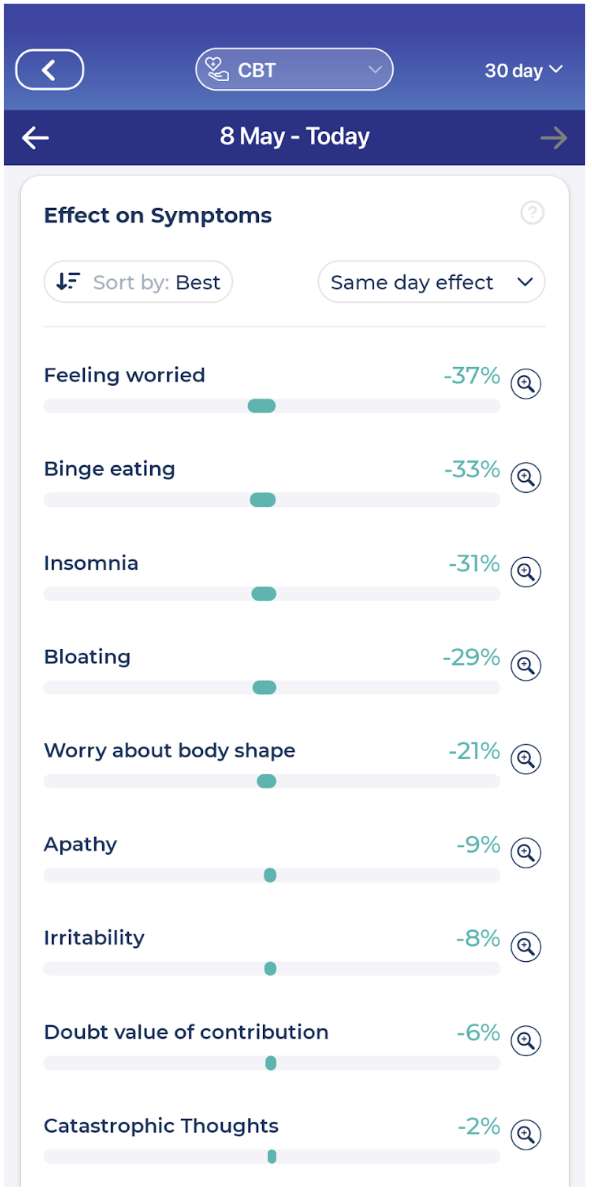 A chart showing how CBT correlated with a positive impact on a range of my symptoms
A chart showing how CBT correlated with a positive impact on a range of my symptoms
Should you try CBT?
Yes. Dedicating some time each day for self-reflection and journaling truly helped me to feel more in control of my mental health. If CBT feels too big of a leap, these activities by themselves might be a more accessible starting point. If you struggle with mild symptoms of depression and anxiety and want to see if CBT can help you to manage them better; I think doing some research and downloading an app is a good place to start. If you have more severe symptoms of chronic mental health conditions; I’d recommend speaking to a medical professional to see if you can undertake CBT with a therapist. I imagine that it’s more effective this way and will provide a safer environment in which to explore some of your negative thoughts. Generally speaking, at Bearable, we recommend consulting with a medical professional anyway. As I’ve found with these experiments into self-care techniques, they often have unexpected results. Whilst they can help to ease symptoms they can also drag up negative thoughts and experiences. So proceed with caution and get some professional advice if you can.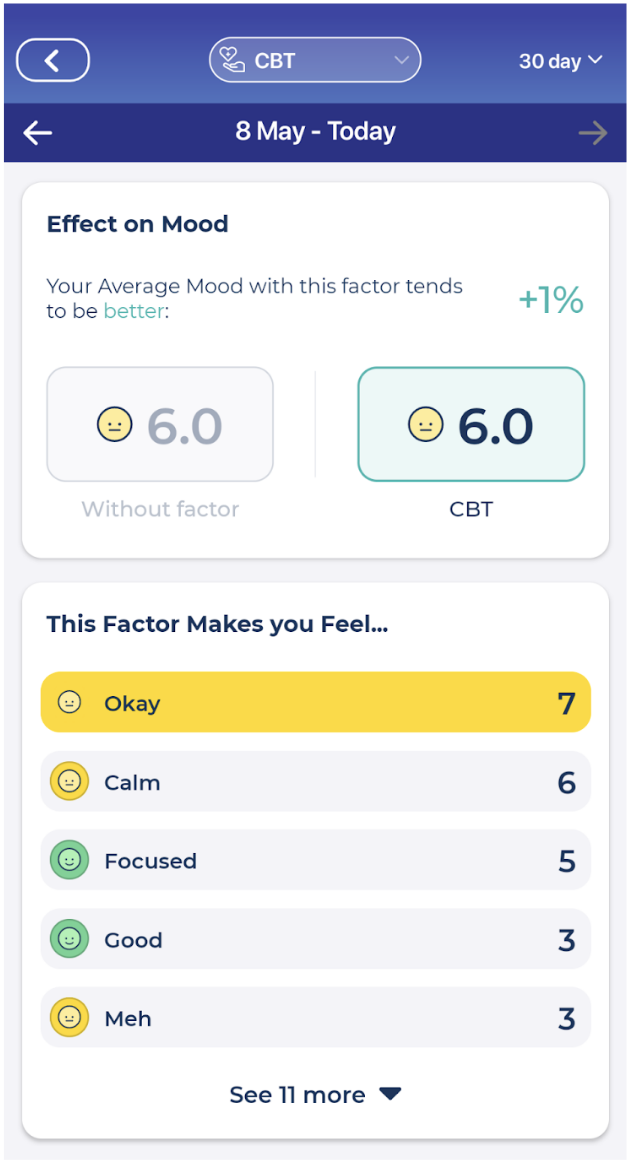 A chart showing how CBT correlated with more feelings of Calm and Focus.
For me, CBT helped me to become more aware of my negative thoughts, helped me to make better sense of them, and helped me to challenge them. I came away from this experience with more practical solutions and a better understanding of my mental health.
I was able to recognise that a large percentage of my negative thoughts are related to how I’m perceived by others and especially my colleagues. I was also surprised by the fact that I often struggle with attaching significance to thoughts and feelings that are not based in reality. This helped to – no pun intended – give me a reality check about the nature of my negative thoughts and anxiety.
Since starting this experiment I’ve continued to use CBT to help combat my negative thoughts almost every day. Whilst it’s often stigmatized as being a tool reserved for people with mental health issues, I think it could genuinely help anyone that wants to find take more control over their health and wellbeing.
Good luck.
—
A chart showing how CBT correlated with more feelings of Calm and Focus.
For me, CBT helped me to become more aware of my negative thoughts, helped me to make better sense of them, and helped me to challenge them. I came away from this experience with more practical solutions and a better understanding of my mental health.
I was able to recognise that a large percentage of my negative thoughts are related to how I’m perceived by others and especially my colleagues. I was also surprised by the fact that I often struggle with attaching significance to thoughts and feelings that are not based in reality. This helped to – no pun intended – give me a reality check about the nature of my negative thoughts and anxiety.
Since starting this experiment I’ve continued to use CBT to help combat my negative thoughts almost every day. Whilst it’s often stigmatized as being a tool reserved for people with mental health issues, I think it could genuinely help anyone that wants to find take more control over their health and wellbeing.
Good luck.
—
Running your own experiments with Bearable?
If you enjoyed this experiment or have run any of your own we’d love to hear about it. You can reach out to us on Instagram at @BearableApp or post your own experiments using bearable using #BearableApp (on Instagram, Facebook or Twitter). — Note: the advice given in this article is not intended as a substitute for medical advice. Please consult a medical professional before undertaking activities intended to impact your health and/or existing medical conditions. Photo credit: Photo by Marcel Strauß on UnsplashCan CBD help with Anxiety, Depression, and Insomnia? Jesse tried CBD for a week to find out!
-
- reduce anxiety and depression
- improve sleep
- soothe pain and inflammation
- improve heart health
- reduce seizures in people with epilepsy
- improve symptoms of inflammatory bowel disease (IBD)
-
- How expensive CBD products can be.
- How unclear the recommended dosage is
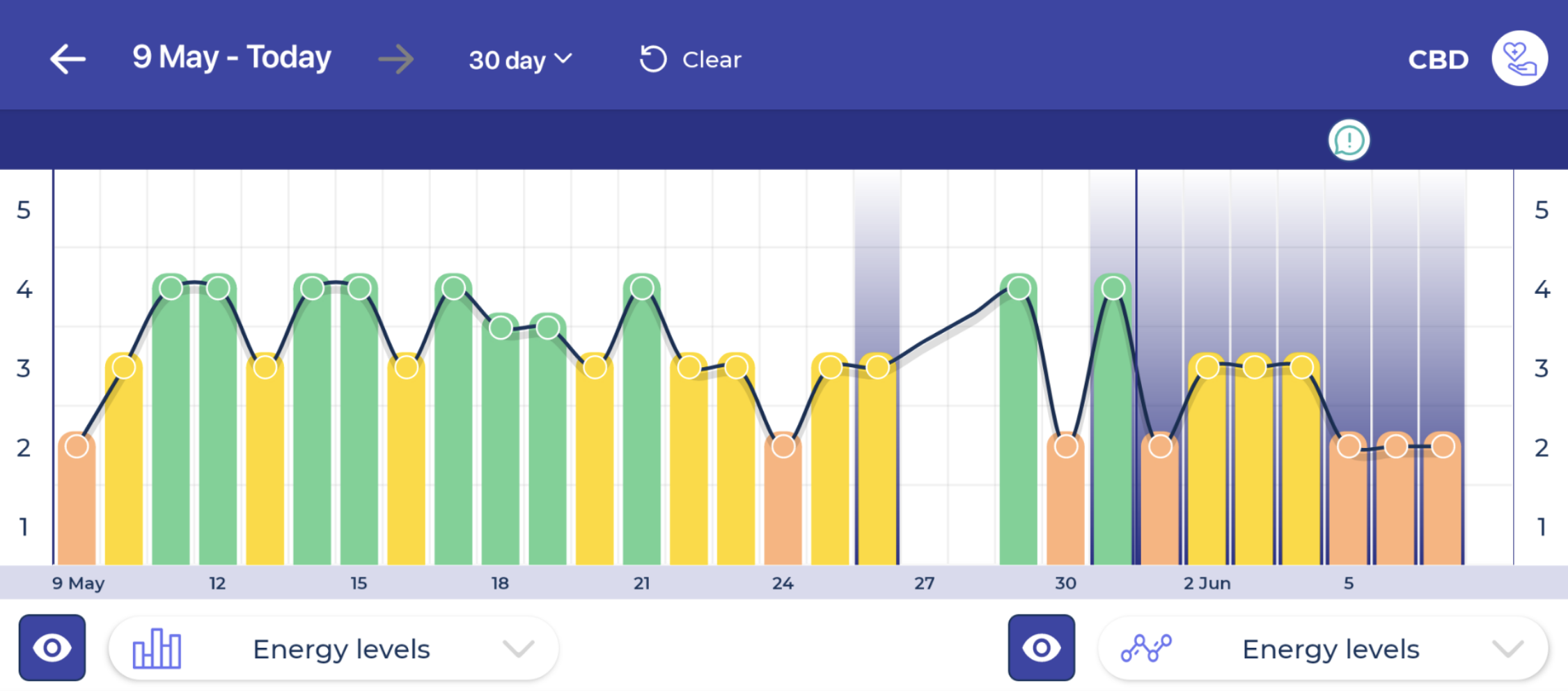
Taking CBD every day for seven days.
Because of the number of variables that impact what an effective dose of CBD is, it’s recommended that you consult a medical professional. However, in lieu of this, a common recommendation is to begin by taking between 20mg and 40mg each day for a week before increasing the dose. I decided to take 10mg of CBD oil under my tongue each morning and then topped this up with a 20mg CBD chocolate snack in the early afternoon. So the outcomes reported here are based upon a 30mg dose taken for 7 days. Day one: My social anxiety was already flaring up as a result of family coming to visit for the weekend. The dose of CBD made the first day easier to deal with. I felt less anxious and less concerned about what my family thought about me and I also felt drowsier than usual. Day two: Once the previous day’s dose of CBD wore off I still seemed to suffer the energy-suck that happens to me after socialising. The dose of CBD on day two didn’t combat this and I ended up spending the day alone instead. Day three: Much like day one, CBD took the edge off of symptoms of my social anxiety. I felt calmer and less self-conscious but still felt depressed, anxious, and couldn’t sleep. Day four: A regular work-day. I felt slightly less self-conscious about my work and interactions with colleagues. Day five: I realised that because of feeling slightly less anxious about my work that I was also possibly contributing less. Day six: CBD helped me to feel less triggered by conversations with people and less anxious about team calls with colleagues. I also wondered if it was impacting my appetite as I was eating less. Symptoms of my Insomnia and depression felt unchanged. Day seven: I’d spent the week feeling slightly calmer, less socially anxious, and a little bit drowsy. Not entirely unlike being a very tiny bit stoned for long stretches of the day. By the last day, I felt like CBD put an extra layer between me and reality but not necessarily in a good way.What did the data say about the impact on my symptoms?
Average Mood decreased by 4% Average Energy Levels decreased by 10% Average Sleep Quality neither improved or declined. Average Sleep Quantity improved by 2% Average Symptom Score improved by 14%How did CBD impact specific symptoms?
Trouble Sleeping declined by 100% Tiredness declined by 81% Catastrophic thoughts declined by 79% Annoyed by others declined by 64% Worrying about embarrassment declined by 60% Irritability declined by 57% Feeling judged declined by 47% Being Self Critical declined by 42% Worrying about group conversations declined by 36% Fear of criticism declined by 36% Worry about weight increased by 1%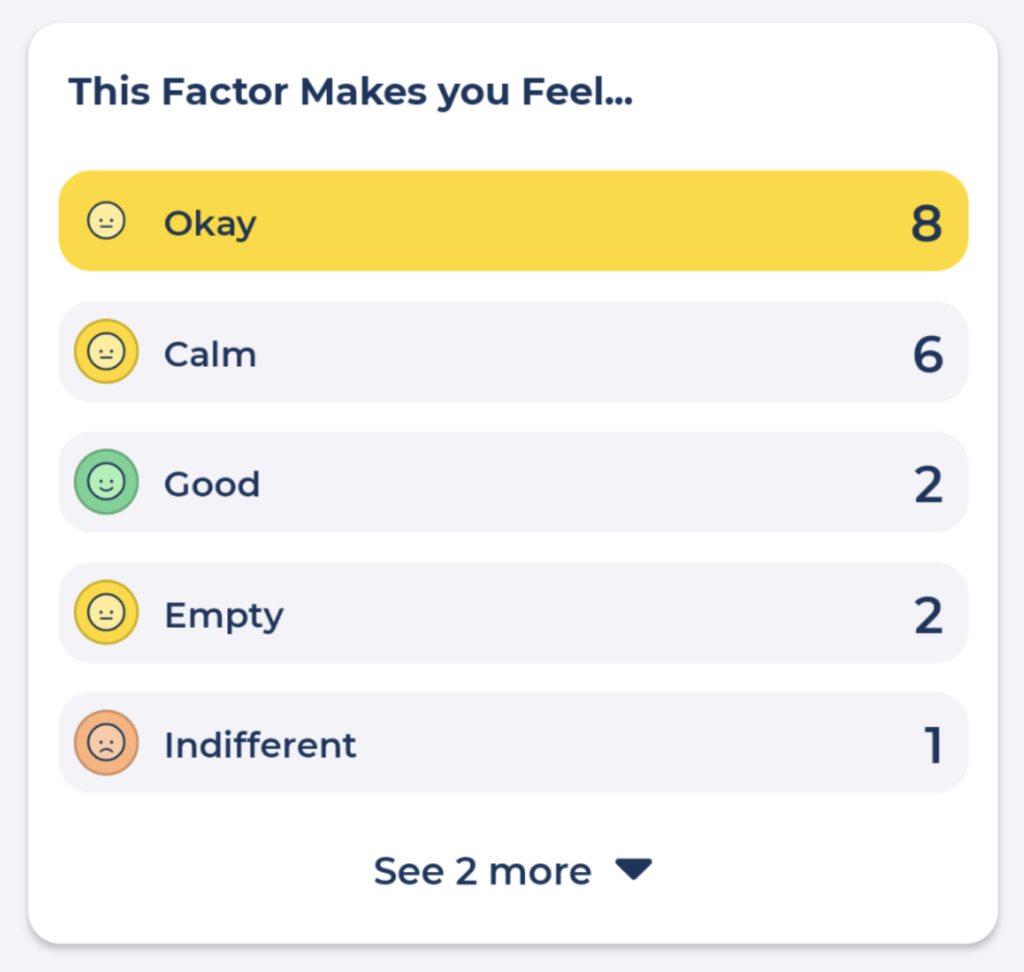
How do I feel about the experience of taking CBD to help with Anxiety, Depression, & Insomnia?
Honestly, I enjoyed the experience of taking CBD every day. I’m not sure if that’s just because I got to eat more chocolate than I usually would. It also crossed my mind that the small amount of refined sugar might be having a positive impact on the symptoms of my anxiety. Something I wrote about recently in another blog post. Overall, I felt like CBD helped me to:-
- Feel more at ease around people and especially groups of people
- Feel less anxious about my contribution at work
- Feel calmer, more consistently okay, and less empty
- Feel less irritable and irritated (especially by people)
- Get more sleep
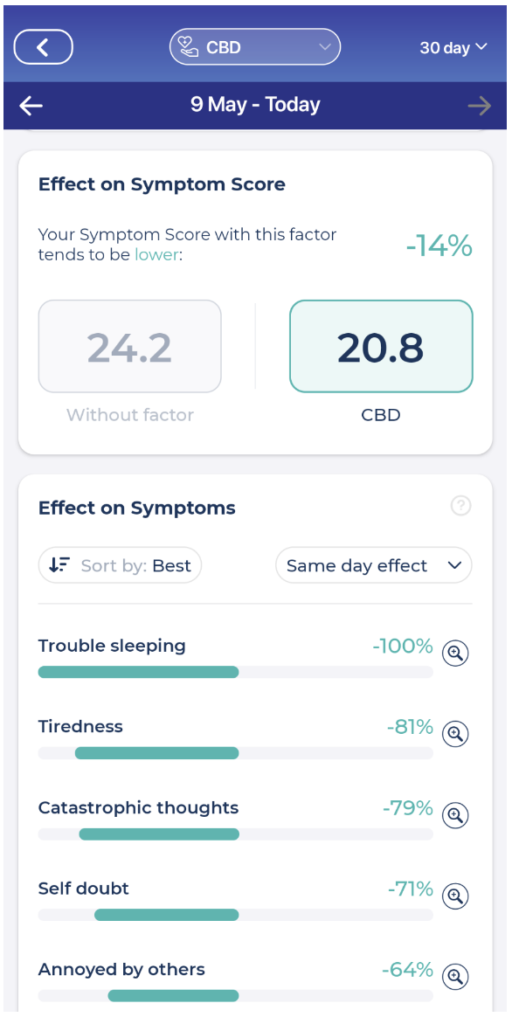
Should you try CBD to help with anxiety, depression, or insomnia?
Yes, if you can afford it. CBD didn’t noticeably have any impact on my depression but I do feel that it helped me with symptoms of my insomnia and especially my social anxiety. More than anything else it took the edge off of a lot of my negative thoughts, self-doubt, and self-criticism. CBD isn’t going to take away your anxiety or insomnia but it might make your symptoms more manageable. If you feel like you need better control over some of your symptoms CBD could help you. CBD is certainly more convenient than some of the other self-care practices that I’ve tried. It takes a lot less effort than meditation or cold showers but it’s by no means the best or only way to gain some control over your symptoms. Ultimately, I think it’s sensible to temper your expectations and to do enough research that you feel comfortable with taking CBD. I also recommend that you speak to a medical professional beforehand as they’ll be familiar with how CBD might impact your health. It’s also important for me to point out that people will respond to CBD differently. If you’ve had negative experiences with cannabis or depersonalization then CBD might not be the best option. If you want to check out some of the other things that have eased the symptoms of my chronic health issues, you can read about them on our blog. Good luck.—
Running your own experiments with Bearable?
If you enjoyed this experiment or have run any of your own we’d love to hear about it. You can reach out to us on Instagram at @BearableApp or post your own experiments using bearable using #BearableApp (on Instagram, Facebook or Twitter). — Note: the advice given in this article is not intended as a substitute for medical advice. Please consult a medical professional before undertaking activities intended to impact your health and/or existing medical conditions. Photo credit: FreepikCan A Sugar-Free Diet Improve Your Health? Jesse Quit Sugar To Find Out.
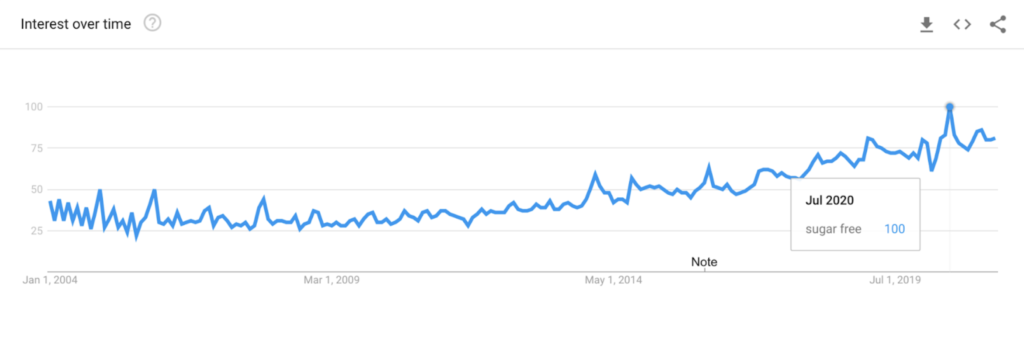
So why am I writing about a sugar-free diet in 2021?
Refined sugar is hard to escape. It’s sneakily used in so many different foods. Some of the worst offenders being Protein Powders, Protein Bars, and Cereal that all masquerade as “healthy” or “good for you”. Not to mention that it’s also incredibly addictive which is undoubtedly why companies choose to sneak it into foods in the first place. This is a problem for me because there’s a negative relationship between sugar and mental health and I live with the symptoms of Generalized Anxiety, Social Anxiety, and Depression. There’s also some evidence that cutting your sugar intake – to reduce inflammation and improve gut health – could have a positive impact on Mental Health.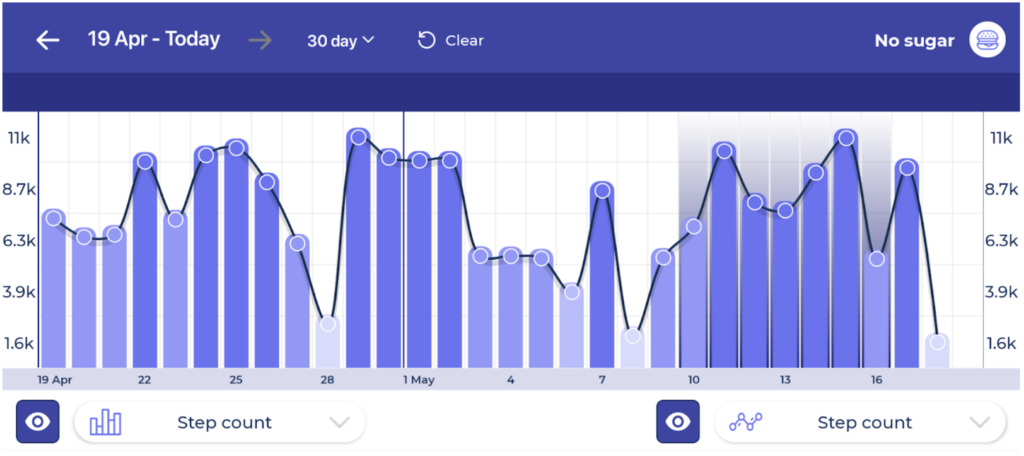
Some background on my relationship with sugar
From a fairly young age, I recognised that sugar – much like alcohol – made socialising easier. I didn’t know why it worked but it did. So I drank gallons of chocolate milk as a teenager. It wasn’t until I became anorexic at 19 that I experienced cutting sugar from my diet. Yet despite my long periods without food, I’d ultimately lapse into day-long binges on sugary foods. Why? Well, my body was starved of calories and sugar was a quick way to get them. As I’ve learned to embrace and acknowledge my mental health over the last 5 years, I’ve since begun to cut foods from my diet. This includes; alcohol, meat, dairy, refined sugar, and more recently caffeine. With the hope that these restrictions will help to reduce my symptoms. However, I still lapse into phases of binge eating, especially in social situations. Recently, I binge ate processed foods for a week after seeing members of my family. This is what led to the decision to track a week without refined sugar to see how my health differed vs. the week with sugar.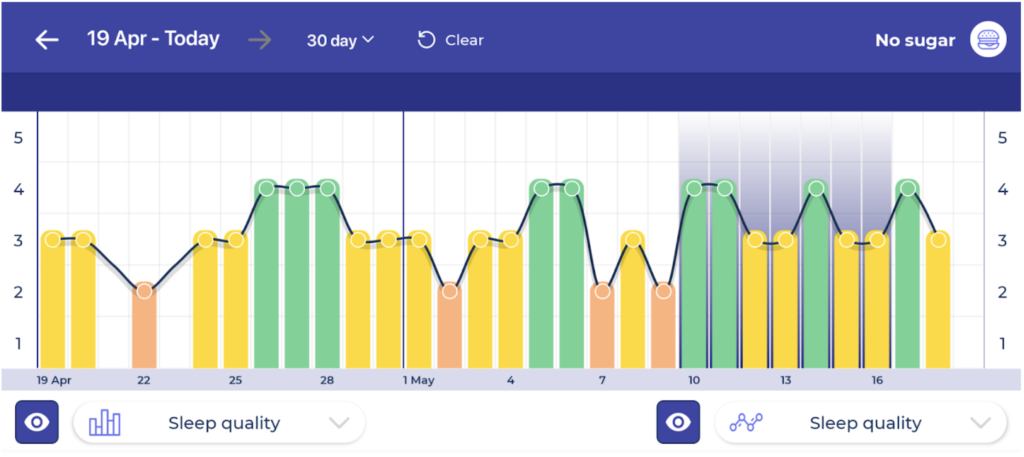
Quitting Sugar for (at least) a week.
I’d usually break this down into a day-by-day account of roughly how each day of the week went. But, honestly, I barely noticed any change. To the extent that my notes from the week don’t really say much at all. Typically there’s an insight or a reflection each day but with no sugar, things seemed to carry on as normal. Or at least they appeared to. So instead, I’m going to give a quick overview of my main observations:1. I did experience some withdrawal symptoms including a light headache and some mild dizziness at a few points throughout the week.
2. To tackle my mid-afternoon sugar cravings I would drink sugar-free water-Kefir or eat an apple. I think this helped curb any major cravings.
3. I accidentally ate sugar on the evening of day 7, it had been snuck into some “sugar-free brownies” made by a well-meaning relative. This gave me a really intense headache.
4. I felt that maybe I was a little more focused than in the week of binge eating. Though my anxiety didn’t seem any better or worse. Perhaps it was too soon to see any real impact?
5. I was sleeping a little better and seemed to have a little more energy.
After a week without any refined sugar, I couldn’t say there had been a dramatic effect. If anything I was a little bit disappointed.What Did Bearable Tell Me About The Effect of No-Sugar On My Health?
Average Mood Score improved by 7% Average Energy Levels improved by 19% Average Sleep Quality improved by 11% Average Sleep Quantity worsened by 8% Total Symptom Score improved by 5%How Did My No-Sugar Diet Impact My Symptoms?
Talking fast became 33% worse Catastrophic Thoughts became 18% worse Doubting the value of my contribution became 17% worse Picking at skin became 11% worse Apathy became 8% worse Self Doubt became 4% worse Insomnia became 11% better Irritability became 20% better Avoiding People became 29% better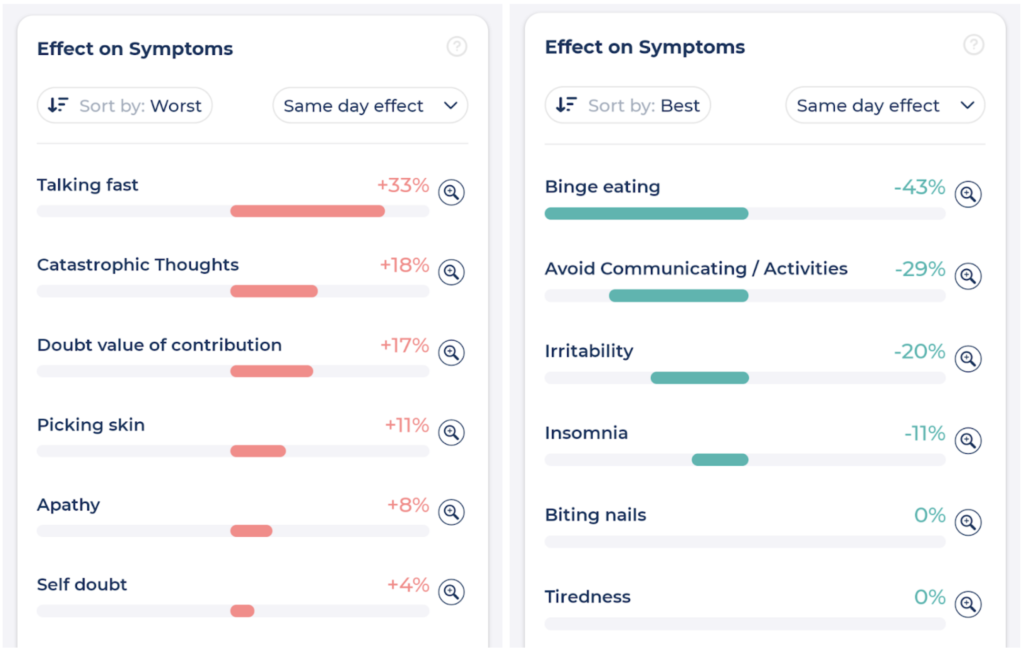
What do all these numbers really tell us about the impact of sugar on my health?
Firstly, a sugar-free diet had a much bigger impact on my health than I had assumed. Correlating with improvements in my Mood, Sleep, and Energy. But, to be honest, the impact on my symptoms left me a bit confused at first. No sugar made me less irritable and less likely to avoid interactions with people BUT also way more likely to doubt myself and to have signs of anxious behaviours (talking fast and picking at my skin)? It wasn’t until I did some reading about the impact of sugar on anxiety that this started to make sense to me.“A history of consuming high-sugar foods attenuates the psychological (anxiety and depressed mood) and physiological (HPA axis) effects of stress”It turns out that sugar might just be great at relieving stress and anxiety. Essentially, by cutting out sugar, I was forcing my brain to have to deal with anxiety head-on. The most common symptoms of which are, for me, doubt about my contribution at work and catastrophic thoughts about what this might mean for my career, life, etc. A reaction to these symptoms is often that I’ll also show more anxious behaviours like talking faster (because I feel self-conscious about what I’m saying) and picking at my skin (as a form of control and focus). It might also explain why I’m prone to binge-eating sugary foods when I’m in social situations.
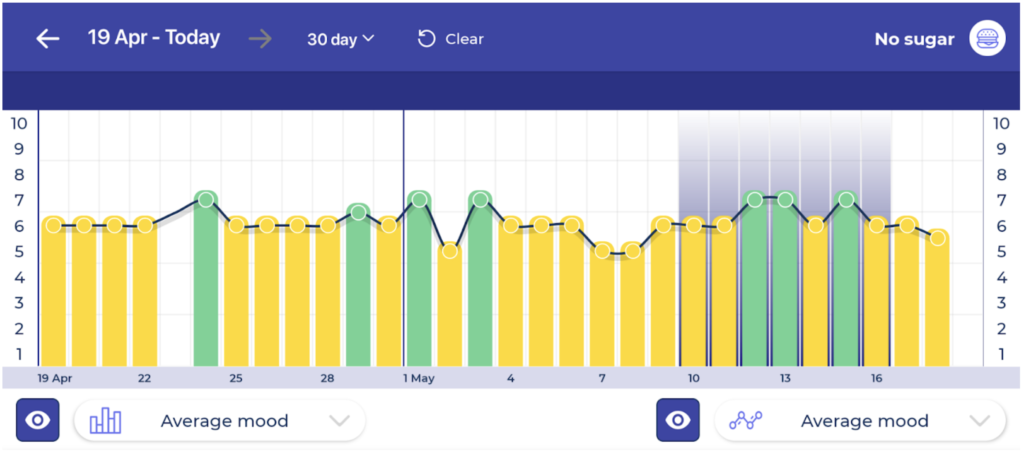
Should You Think About Going Sugar-Free?
Yes, but … For me, cutting sugar from my diet was a trade-off. Overall, I was happier, better rested, had more energy, and was probably less of an ogre to spend time with. Which is quite a compelling argument for trying this for yourself. However, removing a source of stress-and-anxiety-reducing chemicals from my diet obviously had some downsides. Downsides that could probably be better managed with a less addictive solution. For example, CBT, exercise, or anti-anxiety medication. This experience also helped me to re-frame my understanding of the triggers for my binge eating. Making me feel less guilty about using sugar as a form of self-medication in the past. My main takeaway has been that you shouldn’t go into trying something like this and only expect benefits. Setting your expectations low and taking time to reflect on the experience is necessary to finding what works best for you. More than anything, it’s worth thinking about how much you might use sugar as a crutch for your mental health. Which was the main thing I’d failed to consider at the start of this journey. I’ll continue to eat as little sugar as possible but I’ll also be less hard on myself when I do. —Running your own experiments with Bearable?
If you enjoyed this experiment or have run any of your own we’d love to hear about it. You can reach out to us on Instagram at @BearableApp or post your own experiments using bearable using #BearableApp (on Instagram, Facebook or Twitter). Not using Bearable yet and want to track something? Get started by downloading the app for iPhone or Android. Note: the advice given in this article is not intended as a substitute for medical advice. Please consult a medical professional before undertaking activities intended to impact your health and/or existing medical conditions. Photo credit: Photo by Ave Calvar Martinez from PexelsCan Quitting Social Media Improve Your Health? Jesse Left Social Media For A Week To Find Out.
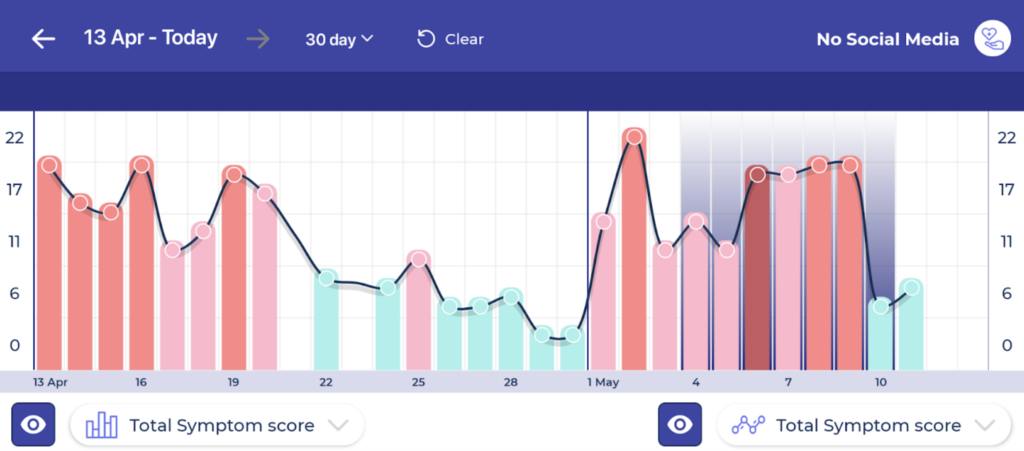
Is social media bad for our health?
This is a question that I think most people would answer with a resounding; YES! Certainly, I think most people are aware that it can have a negative impact on their health. Not that this stops any of us from using social media an average of 28 times per day.What are the potential negative effects?
- It reduces your Self Esteem due to constantly comparing yourself to others.
- It can trigger feelings of Loneliness due to seeing other people socialising (aka FOMO)
- It impacts Sleep as a result of blue light and an inability to put down our phones
- Attention Span and Productivity are impacted by the desire to constantly check our phones
- It creates feelings of Stress, Anxiety, or Depression
What are the positives of social media?
- Connecting with communities of people we wouldn’t otherwise have access to
- Access to an incredible amount of information, news, knowledge, etc.
- Promotion tools for people and businesses
- Social platforms have launched careers for millions of creators and influencers
- Entertainment in every possible form
So why is it so hard to quit social media?
As with anything, doing something in moderation is probably the better route vs. forcing yourself to quit something that isn’t entirely bad for you. I think many of us just struggle with the moderation part and that’s possibly the issue behind the issue. Let’s take a quick look at why that’s so difficult in the first place. Social platforms are typically paid for by advertisers, not users. It, therefore, benefits companies like Facebook to make their platforms addictive, to create opportunities to reward you and to use psychological techniques to alter your behaviour. By wiring your brain so that social media use becomes an unconscious habit, social platforms create more opportunities for advertisers to reach you. That means more money in the pockets of the social media platform owners. By quitting for a week I hoped I might be able to begin to train my brain out of some of these habits. As well as making Mark Zuckerberg a tiny bit poorer.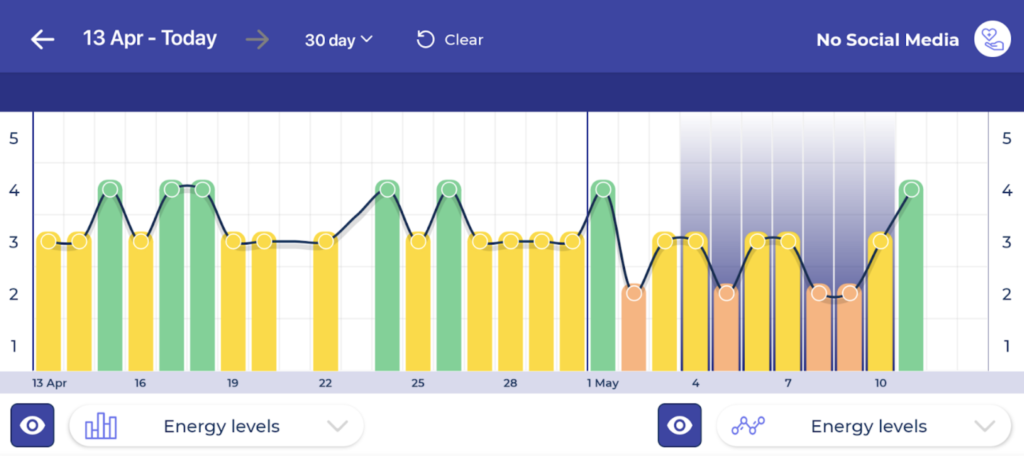
Why I quit social media for a week
Social media mostly plays a positive role in helping to distract me from my anxiety. I live with symptoms of Generalised Anxiety, Social Anxiety, Depression, Body Dysmorphia, and Insomnia. I’m also very aware of the fact that I use social media as a way to distract myself from symptoms of these conditions. For example, it’s easy for me to distract my mind from Anxious or Catastrophic thoughts by rewatching SNL compilations on YouTube. In fact, it’s pretty common for people with Anxiety to re-watch the same things over and over as a form of self-care. I also sometimes watch other people do things that I don’t have access to. For example, during lock-down, I followed a lot of influencers that live abroad because I missed travelling. Some people even take this to the extreme of watching other people clean their homes when they don’t have the motivation to clean their own. However, using social media as a crutch for Anxiety never really felt that healthy or positive. A lot of my Anxiety is triggered by feelings of doubt about my work and how I’m perceived by colleagues. I often blame my Anxiety for not having achieved more or for distracting me from my goals. This was an opportunity to try to change that.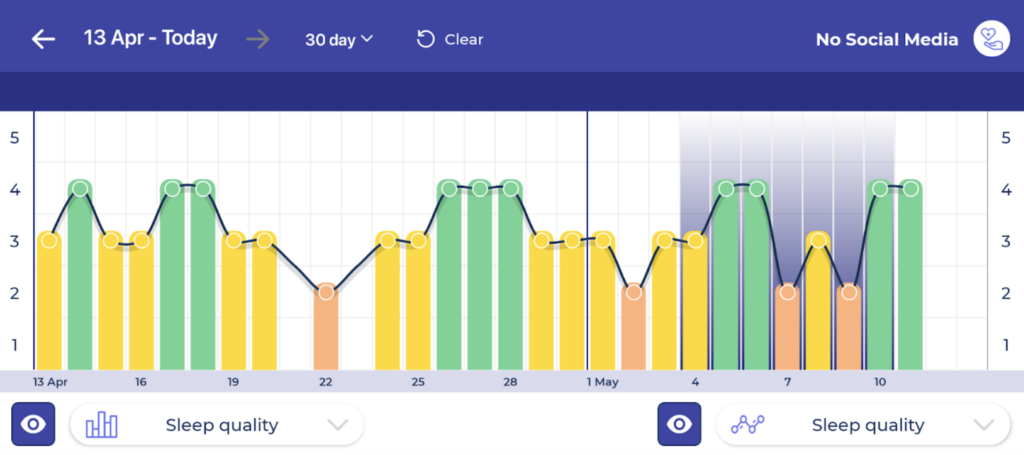
Quitting Social Media
Day One: I Struggled a bit to fight the urge to mindlessly open social apps. I ended up gaming instead – not a great start. The withdrawal was stronger than I anticipated. Whenever I used my phone I had to actively tell myself not to click on Reddit and YouTube. Day Two: I read more news and played more guitar than usual. I still tried to distract myself from my mind/thoughts only now it was with different methods. I struggled with binge eating, a symptom of my disordered eating and BDD. Day Three: I felt exhausted and I overslept. Social media is usually part of my morning routine and helps me ease into the day. I probably just need to go to bed earlier instead of finding other late-night distractions. I meditated at lunchtime instead of scrolling through Reddit. I went to bed earlier and slept well that night. Day Four & Five: I was a bit angrier than usual and felt a bit more frustrated by things. I ended up binge-watching a series on Amazon to distract myself from any negative thoughts. This ended up disrupting my sleep for two nights. I struggled with binge eating on both of these days. Day Six: I woke up and tried to be productive. Wrote a list of things to do for the weekend. Things I’d been putting off. I meditated and went for a long walk. However, I also binge ate all day again. Day Seven: I continued to binge eat which was concerning to me. I also made an effort to focus on doing the things I said I would do when I quit social media. I read more, practised Spanish, made some music, edited some photographs, and had a generally productive day.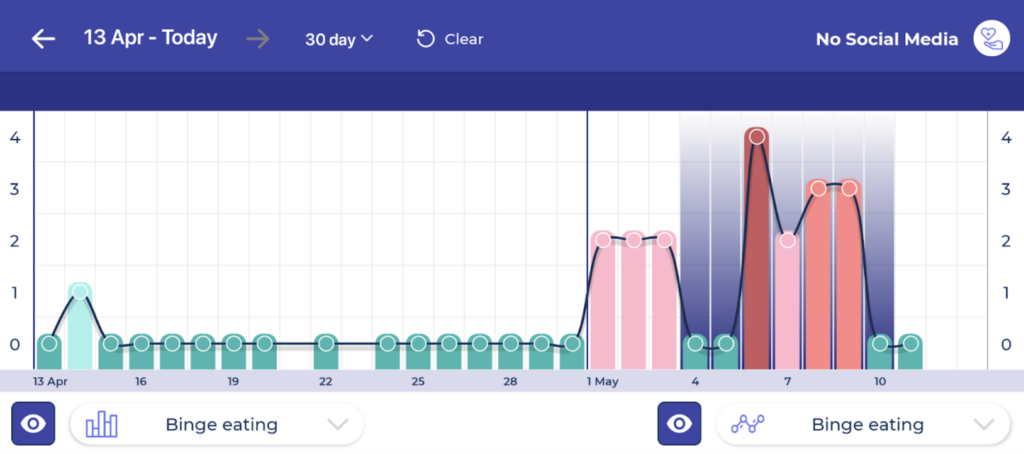
What does the data tell us about the impact on my health?
My Average Mood Score dropped by 8% My Average Energy Levels dropped by 22% My Average Sleep Quality improved by 1% My Average Sleep Quantity improved by 3% My Total Symptom Score increased by 36%What does the data tell us about the impact on my symptoms?
- Binge Eating increased by 400%
- Biting my Nails increased by 173%
- Feeling Joyless increased by 100%
- Avoiding Communication and Activities increased by 60%
- Nervous energy increased by 33%
- Apathy increased by 24%
- Tiredness increased by 23%
- Catastrophic thoughts decreased by 14%
- Questioning past conversations decreased by 81%
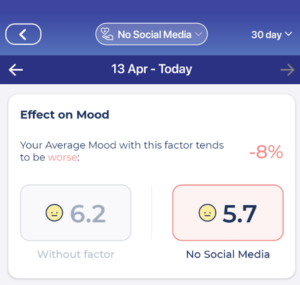
What are the Benefits of quitting social media?
For me, there were very few benefits. The main thing I gained from the experience was a better perspective on my Anxiety. It revealed to me that I’m sometimes overly reliant on social media to help manage my symptoms. Far more than I had realised at the beginning of this experiment. Without the distraction of social media, I was faced with the prospect of having to deal with my anxious thoughts and symptoms head-on. Essentially, quitting social media made clear to me that I need to do more to address the root causes of my Anxiety. As someone that’s spent a lot of their life downplaying the severity of symptoms of their mental health. This experience was a little bit of a wake-up call to take things like CBT and Meditation more seriously as Anxiety management techniques. Admittedly, some of the results listed above were undoubtedly impacted by a flare-up in binge eating. This typically makes me more irritable, disrupts my sleep, and has a generally negative effect on my symptoms. Overall, quitting social media had a more significant impact on my health than I ever would have imagined. A graph showing the positive impact that no social media had on the amount of reading I did.
A graph showing the positive impact that no social media had on the amount of reading I did.
Does Quitting Social Media Make You More Productive?
During the seven days that I quit social media, I:- Wrote and recorded more music than I would normally
- Began reading more before bed
- Started an online course that I had been putting off
- Meditated more than usual
- Read more news and felt generally better informed about current events
 A graph that shows the positive impact that no social media had on the time I spent practising the guitar.
A graph that shows the positive impact that no social media had on the time I spent practising the guitar.

